This June, I sailed onboard Ultraman II, a Ross 930, for two weeks racing 600+ nautical miles around Vancouver Island in the 10th edition of the VanIsle360 race. The race consisted of nine legs with a fleet of 52 boats, working up the inside from Nanaimo up to Port Hardy, around Cape Scott and then down the outside of Vancouver Island to Ucluelet and Victoria and back up to Nanaimo.

On most years, the VanIsle race has suffered from a lack of wind, at least on the inside legs. Prior to this race, only 3 boats had finished every leg. But this year, there was a bit of everything in terms of wind conditions, mostly a lot of it. There were back to back days beating upwind into gale force winds in the Johnstone strait, crashing up and down over choppy waves formed from 5 knots of current opposing 35-40 knots of wind. We were barely hanging on with a double reefed main and storm sail on our light displacement boat, pushing forward to meet our hotel reservation.
The spinnakers were finally flying once the fleet rounded Cape Scott, and it was exhilarating downwind sleigh ride down the west coast, catching the sunset on the Pacific Ocean on my birthday. Somewhere between Winter Harbour and Ucluelet, the boat hit a new top speed of 19.7 knots while surfing down a wave. The three main drivers, Skipper Andrew and Tom took turns besting each others speed records. I watched the sunset over the Pacific, and then watched the sunrise as the boat drifted into the finish line at the Amphirite Lighthouse south of Ucluelet.
The downwind party continued from Ucluelet to Victoria, once again with gale force winds at Race Rocks. We lost the fractional kite here, putting a tear in it while pulling it down in 35 knots. Sail and boat damage were no strangers to this race, with one boat running aground in the Johnstone Strait, and our sistership Interim losing their rig in Race Passage. And then from Victoria to Nanaimo, we sat drifting in the Salish Sea in zero breeze, only hours after flushing out of Active Pass with 5 knots of current and a boat speed of 10 knots over ground.
Here’s a video that Andrew, our driver, put together that more or less sums of the experience in a minute and a half. https://vimeo.com/134057860
I’ve also put together a set of photos for each stage of the race on my Flickr webpage. I haven’t add any captions to those photos, so if you’re interested in more of the story and my experience, continue reading down below as I go through in more dry detail about each part of the journey around Vancouver Island on a 30 feet sailboat.
Photos:
Leg 1: Nanaimo to Comox – Photos
Leg 2: Comox to Campbell River – Photos
Leg 3: Campbell River to Hardwicke Island – Photos
Leg 4: Hardwicke Island to Telegraph Cove – Photos
Leg 5: Telegraph Cove to Port Hardy – Photos
Leg 6: Port Hardy to Winter Harbour – Photos
Leg 7: Winter Harbour to Ucluelet – Photos
Leg 8: Ucluelet to Victoria – Photos
Leg 9: Victoria to Nanaimo – Photos
Leg 1: Nanaimo to Campbell River
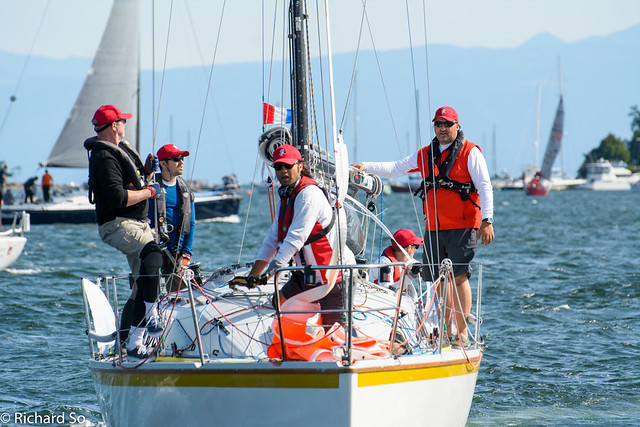
After months of preparation, the boat was finally at the start line in Nanaimo Harbour. Lots work and cost went into getting the boat ready (thanks Skipper!) and crew effort for all the qualifying races leading up to this point. Here’s a shot of Tom, Andrew, Dave, Callum and Jason (other Jason hidden), at the start line off the Nanaimo Pier. We didn’t have a dedicated shore crew, so one crew member switched out for each stage to drive the truck and trailer to the next spot. Anything extra was taken off the boat and kept in the trailer to minimize weight, and we had things important things like spare battery, spare sails, water food and beers in the trailer.
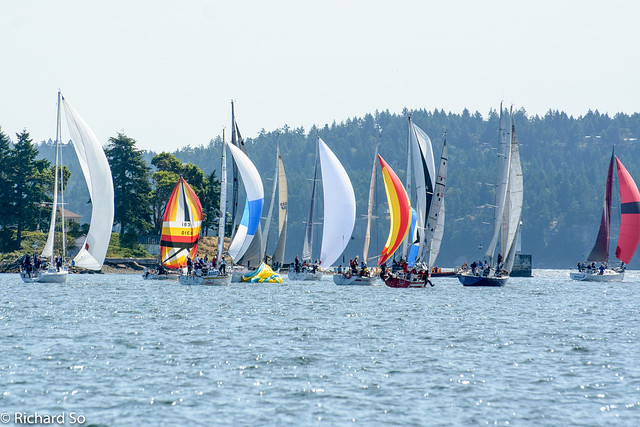
Except for the first start in Nanaimo, all the other races had a single start. The start area inside Nanaimo harbour was too small to try and start 52 boats at once. Ultraman II is on the left, flying the blue and water spinnaker as they head south around Protection Island. Beyond the southern point of this small island, the fleet turned northward.
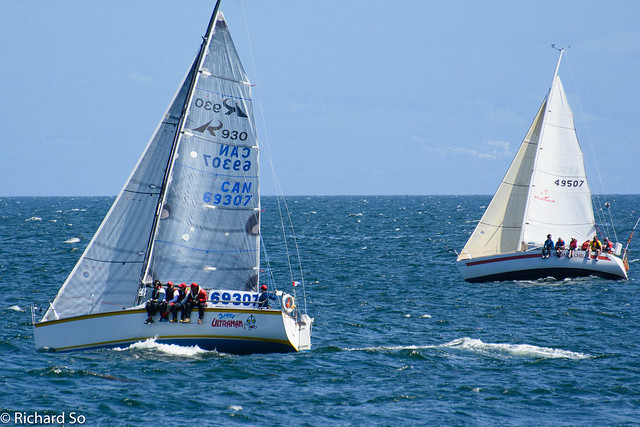
Ultraman II, the Ross 930, and Thursday’s Child, the Hotfoot 31, closely matched while reefed and beating into 15 to 25 knots of wind on the east coast of Vancouver Island. These guys were in for a long day of sailing, beating upwind the whole way, while I had a short drive from Nanaimo to Courtenay.
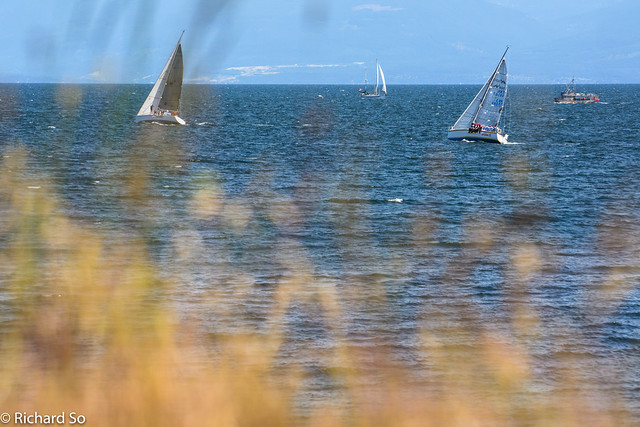
Ultraman II sailing north from Nanaimo. I took these photos from Neck Point Park, a short drive north of Nanaimo.

My next planned photo stop was Rathtrevor Beach, 45 minutes north of Nanaimo. I walked out to the vast tidal flats here and watched the fleet sail by. Some boats chose to sail closer to shore in search of back eddies and favourable current. This is Zulu, a Jepersen 42 which finished 5th/15 in Division 2, sailing close to the beach in Northwest Bay.
I continued driving to Courtenay to check into our hotel, complete with swimming pool and hot tub. I made some dinner anticipating that the crew would arrive sometime between 7-10pm, and went off for a long evening run. Checking the Race Tracker, I could estimate when they would arrive at the Comox Yacht Club. A 7pm ETA, turned into 10pm, then 11pm. The finish line was a line between Deep Bay and the south end of Denman Island, but there was still another hour of motoring through Baynes Sound to arrive at Comox Harbour. Ultraman II finished 11th/13 in Division 3, crossed the line at 20:25:28, with an elapsed time of 9:55:28. There was a “friendly” regatta around the Comox Harbour the next day, but we spent the day fixing things on the boat and getting the boat and crew ready for the next legs.
Leg 2: Comox to Campbell River
With a strong high pressure ridge off Vancouver Island, there was not much of a change in the forecast for the first week. Today, the marine forecast called for another day of 20-25 knots northwesterlies, as the fleet sailed north to Campbell River.
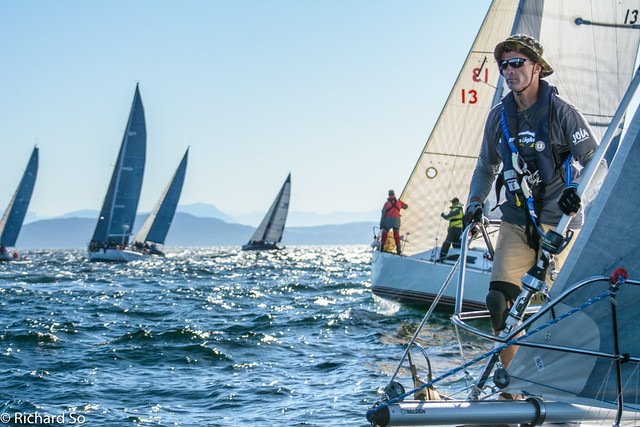
At the start line on the east side of the Comox Bay. One mass start, as it would be for the remainder of the race. I don’t have many photos from the start sequence, as I’m usually too busy either in the front of the boat, keeping a lookout for boats or making a last minute sail change. And then I’m sitting on the rail with the rest of the crew, balancing out the boat. There are some photos from shore on the Van Isle 360 facebook page.
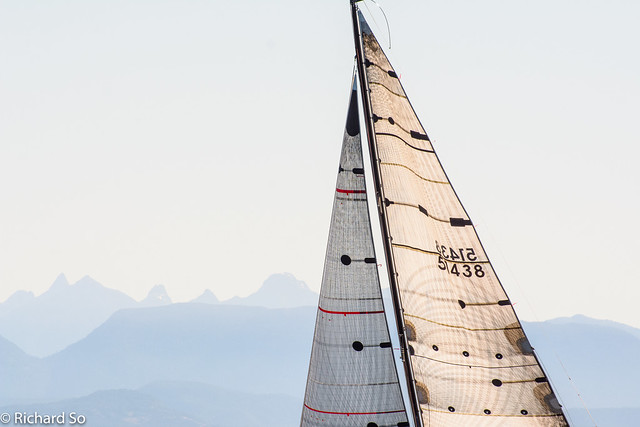
Peaks on the Sunshine Coast, in the Powell Divide area, and the sails of Papillon, an Aerodyne 38 racing in Division 1.
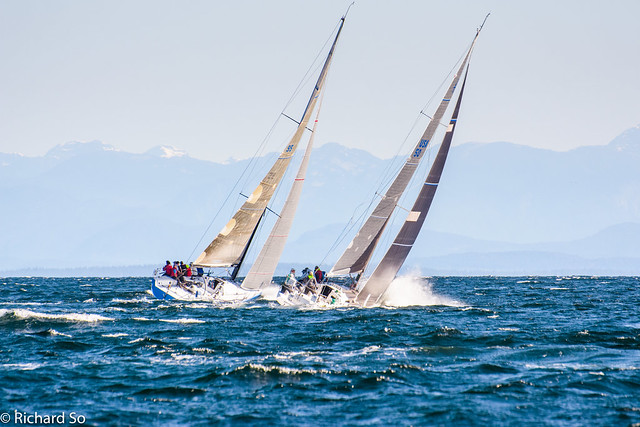
The Ross 930 gets powered up very quickly in a breeze, and with the strong winds we were struggling to keep the boat under control. Simple tasks like moving off the rail, going behind everybody (I sit furthest forward), down the hatch into the cabin and getting out my camera and then back out was not easy. Add the unpredictable salt spray from the chop and my camera rarely came out when it was windiest. On my next ocean race, I’ll definitely invest in some sort of waterproof enclosure for my DSLR. Being the lightest guy on the boat, I was usually the first one sent down below to retrieve clothing, beers, sandwiches, sails, etc. If I had a penny for every time I was told to put the camera away…
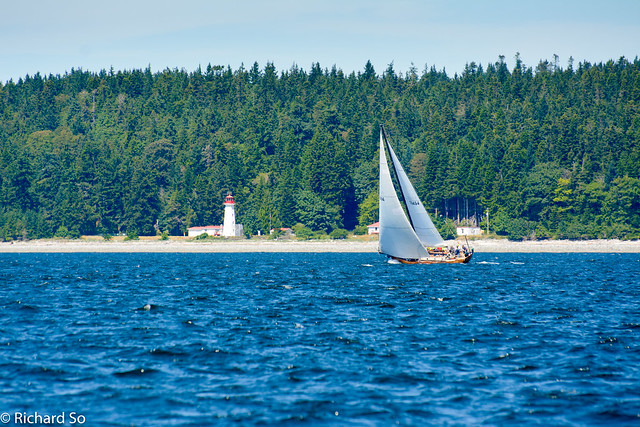
Nightrunner, Perry 42 sailing into Discovery Pass, the channel between Vancouver Island and Quadra Island. The afternoon winds were building here, making for a rough ride combined with the sea state as we raced into Campbell River under a reefed main and the #4 headsail.
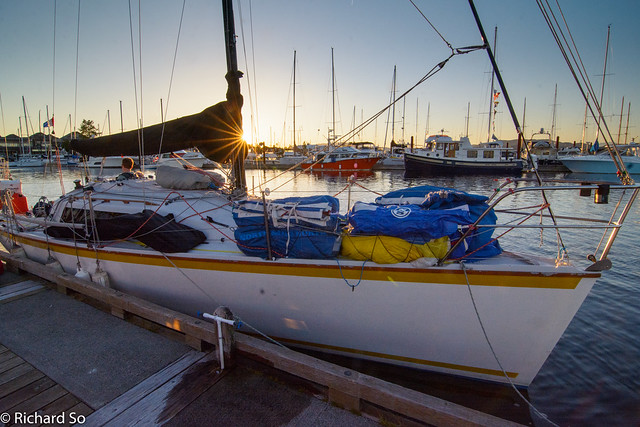
Ultraman II tied up at the dock in Campbell River. We finished 9th/13 in Division 3 PHRF at 15:04:14, with an elapsed time of 6:04:14. Time to recover, drink beers, and prepare the boat for the next two legs up the Johnstone Strait.
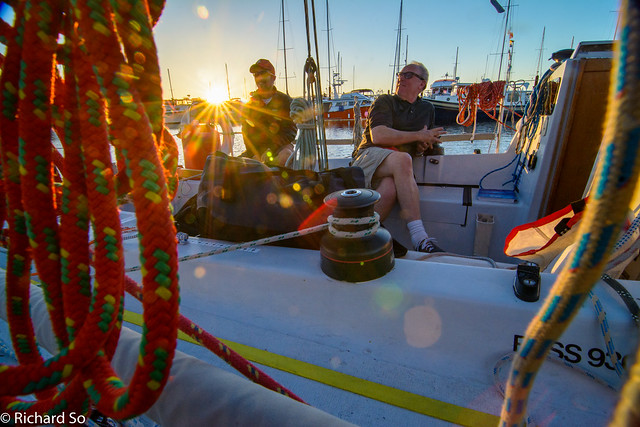
The plan was to leave the dock at 4am the next morning, in order to catch slack tide at Seymour Narrows at 05:26. A few of us slept on the boat to minimize morning faff moving people and gear between the hotel room and the boat.
Leg 3 – Campbell River to Hardwicke Island
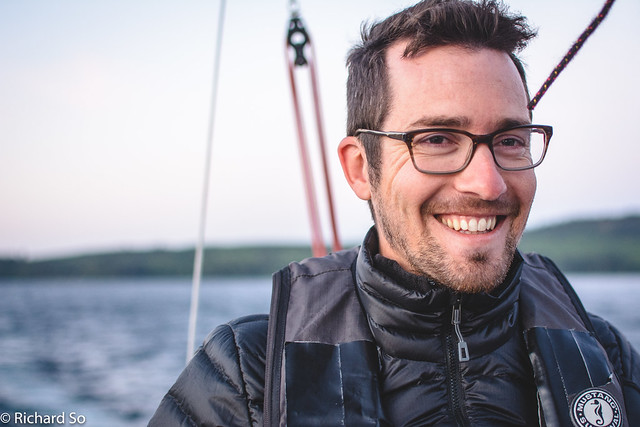
Early the next morning as we motored north towards Seymour Narrows. I have no idea why Andrew is smiling here, as we had both slept poorly on the boat, after a very rude awakening with sails falling down on all of us through the fore hatch as boat left the dock (see above photos of all the sails). Now imagine waking up with a sail. At least the spinnakers are softer.
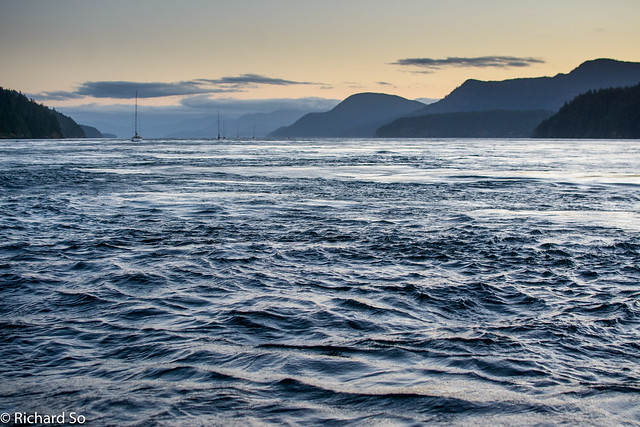
Even at slack tide, Seymour Narrows is far from calm. The stretch of water was once described by Captain Geroge Vancouver as “one of the vilest stretches of water in the world.” In the middle of Seymour Narrows was once the site of Ripple Rock, a treacherous rock that was barely covered by water. After numerous shipping accidents, the government decided to blast the rock from underground tunnels. This explosion, in 1958, was noted as the largest non-nuclear explosion in the world on record at the time.
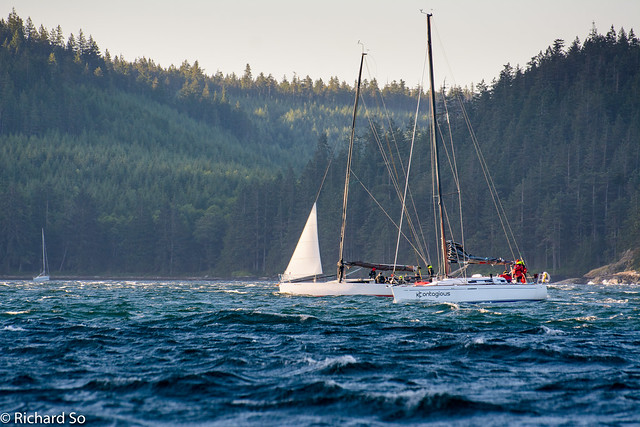
Raven and Contagious waiting uncomfortably in Deepwater Bay. We arrived by 6am, but the race start was not until 9:30am. The forecast had not been looking good for us, thirty to forty knots northwesterly, gale warnings in the Johnstone Strait for the next couple days.
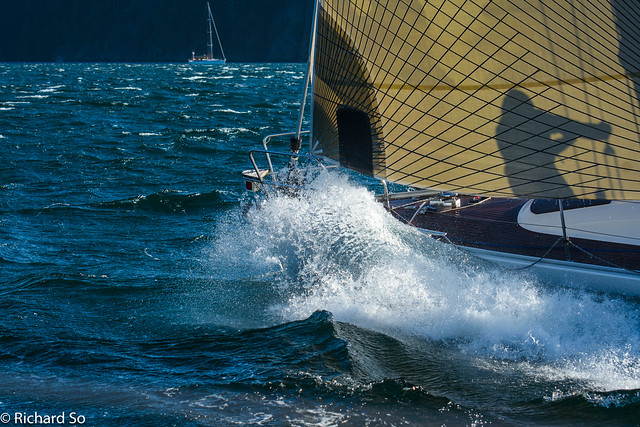
Bashing into waves with only the jib up. Some boats chose to motor, but for many boats, having one sail up was more stable as we tacked back and forth in the narrow Deepwater Bay, trying to stay in the shelter of the bay, in the lee of the morning outflows.

Finally racing and leaving the safety of Deepwater Bay, and into the Johnstone Strait.
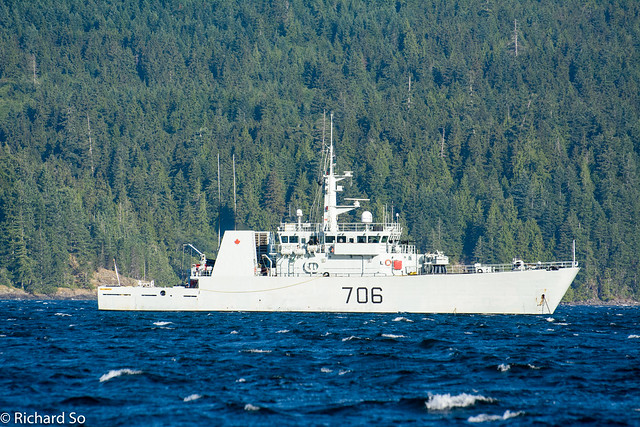
The HMCS Yellowknife standing by for our transit through Johnstone Strait. Somewhat reassuring to have this ship ready for assistance.
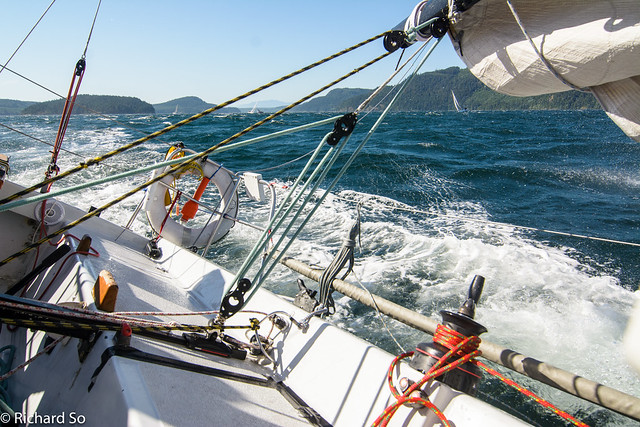
This photo does little justice to the conditions that we saw during the two days of sailing in a Johnstone Strait gale. The Ross 930 is a very wet boat in these conditions, and my position at the front of the boat compounded all of this. I was far from dry after numerous sail changes at the sharp end, wrestling down sails with salt spray everywhere.
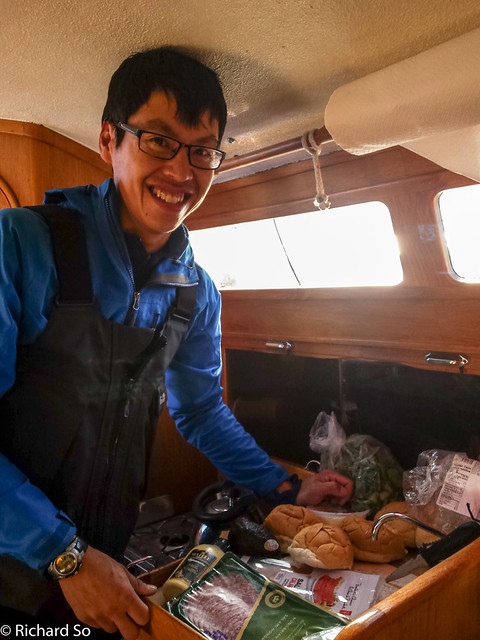
On sandwich duty, which was usually me. I lost track of how many sandwiches I made on this trip.
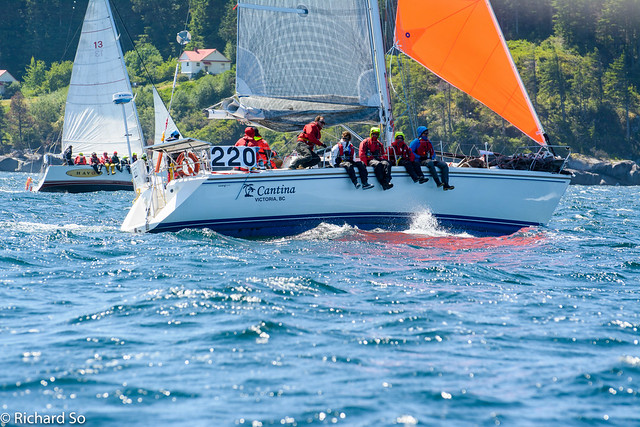
Cantina, a Catalina 42, flying the storm sail. Without the scale of Johnstone Strait in this photo, the water looks calm and it looks like another Sunday sail in the harbour.
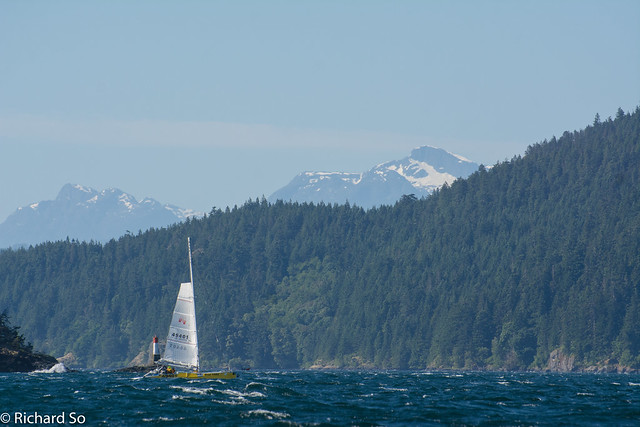
But looking ahead, there were whitecaps everywhere and spray streaming off the breaking crests.
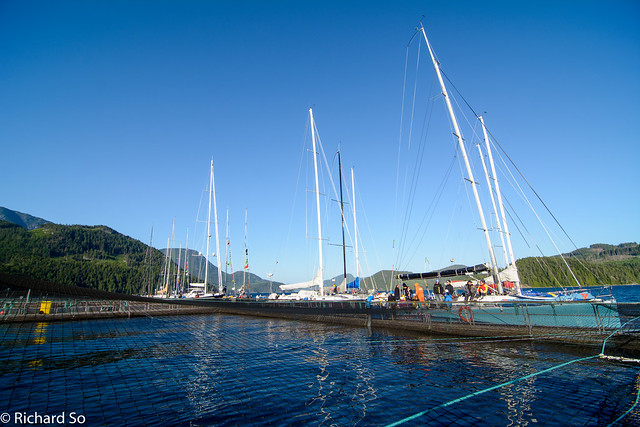
The fleet rafted up alongside the fish farm on Hardwicke Island. Ultraman II finished 11th/13 in Division 3, crossed the finish line at 14:46:31 with an elapsed time of 5:16:31. By this point, the consensus amongst the sailors of the small boats was that we had brought a knife to a gun fight.
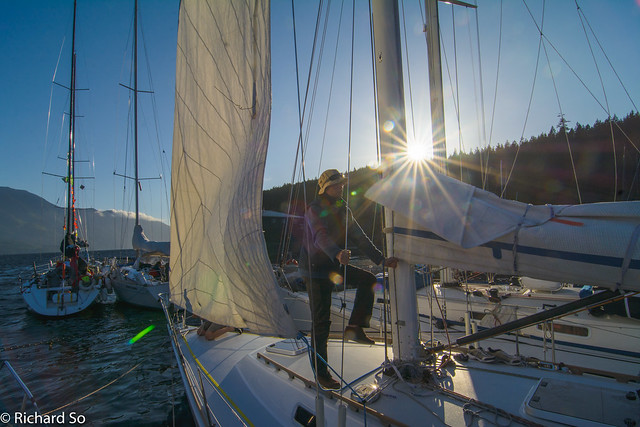
The fleet rafted up at Hardwicke Island.
Leg 4 – Hardwicke Island to Telegraph Cove
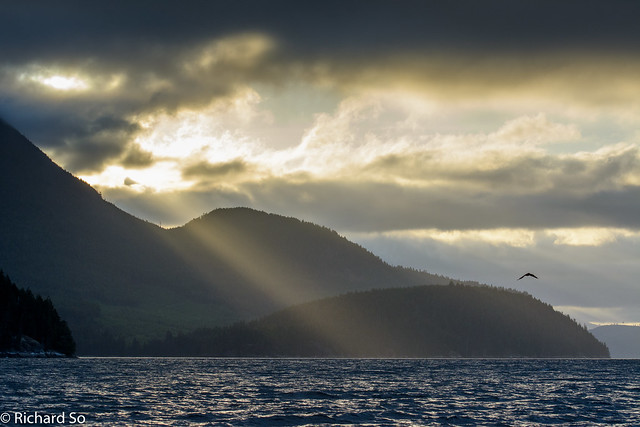
Looking up Chancellor Channel as the sun rises the next morning. The fish farm is on the south side of Hardwicke Island, not completely protected from the Johnstone Strait winds.
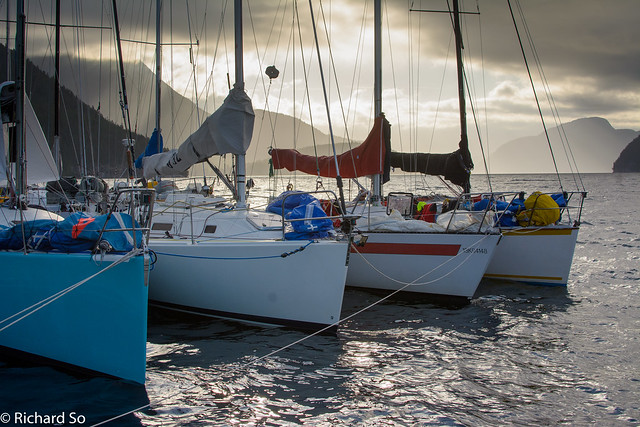
Occam’s Razor, Blue Jay, Thursday’s Child, and Ultraman II rafted up at the fish farm.
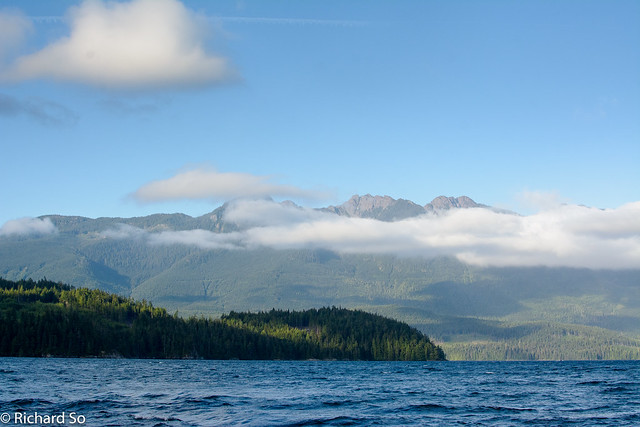
Looking out at the west end of West Thurlow Island, and the Prince of Wales Range on Vancouver Island behind. The race start was between the end of that island, and Hardwicke Island.
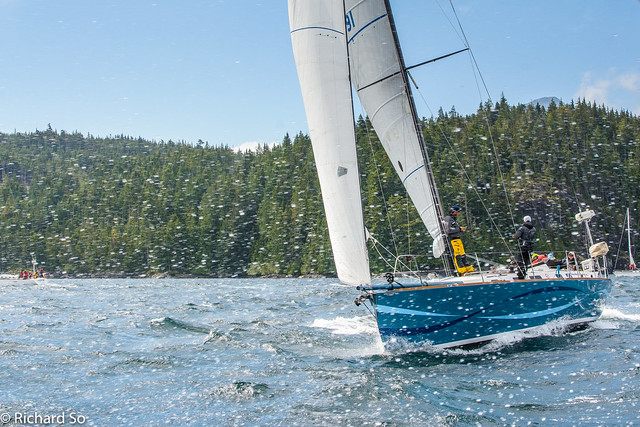
Zulu at the start line. In the lee of Hardwicke Island, the winds were gusty, but still in control.

But once we reached the main part of Johnstone Strait, the full force of the winds hit us. The wind speed instrument is only reading 34 knots apparent here, but my camera was away for the worst of the gusts. You can get a better sense of the wind conditions in the video linked at the beginning of this post, photos rarely do it justice. The orange sail is the storm sail, the smallest sail on the boat. The black string at the front of the sail can be tied around the forestay, in case the sail pulls out of the foil. But this was a race, and we were sailing with the storm jib for so long that those strings became our tell-tales.
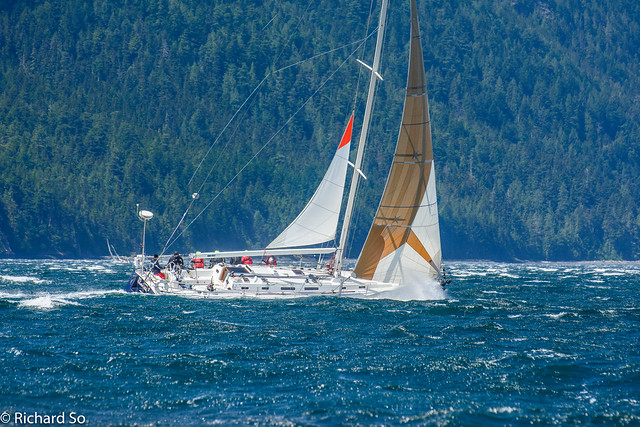
This is Jam, J-160, sailing under a jib and the stay sail. They blew out their mainsail earlier in the race. They retired from this leg and motored to Telegraph Cove to arrange for a new mainsail.

Looking back at the Johnstone Strait, whitecaps everywhere, spray everywhere. It was a very wet ride on the rail. The Race to Alaska, R2AK race fleet also sailed through the Johnstone Strait that same week. Check out these aerial photos from Nick Reid to get a sense of the power of the wind and water in this narrow channel.

Completely soaked, just part of the job at the bow guy. Water would still get through the top of my high collar during bigger waves when I was up on the bow changing sails.
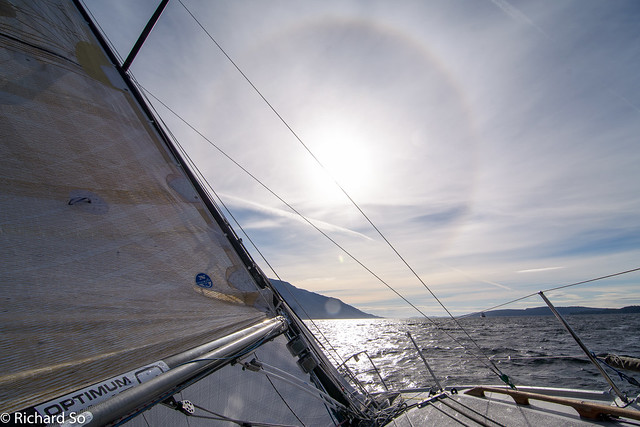
After all that effort, it was disappointing to not finish this leg of the race. The race start was at 10am, with 41 nautical miles to sail upwind to get to Telegraph Cove before 7pm. For the faster IRC and Div 1 boats, this was less of a problem. But for the slower Div 2 and 3 boats, almost half the fleet did not complete this leg. In Div 2, only 9 of out 15 boats finished, and in Div 3, only 6 out of 13 boats finished. There was no time extension, so shortly after 7pm, we dropped the sails and motored the rest of the way to Telegraph Cove.

Beautiful shoreline outside of Telegraph Cove.
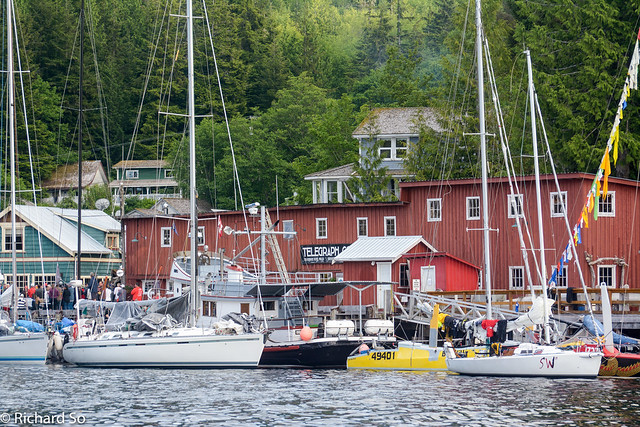
Entering Telegraph Cove, population 20. We arrived as the awards ceremony were already underway.
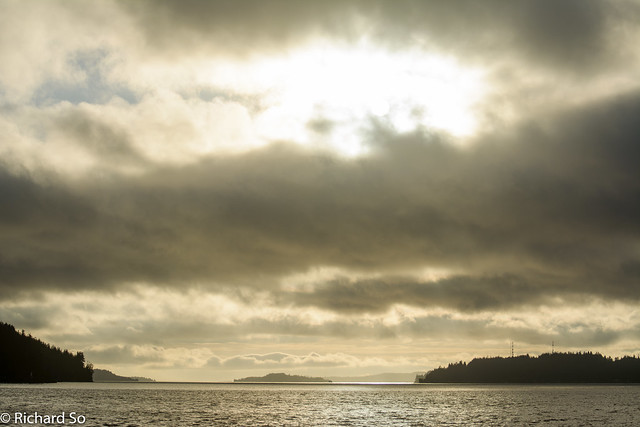
It’s beautiful up here. Telegraph Cove is tucked into this little pocket of wilderness on the north island.
Leg 5 – Telegraph Cove to Port Hardy

Early morning view in Johnstone Strait.

Our cabin above the water in Telegraph Cove. A boardwalk connects the buildings lining the small cove.
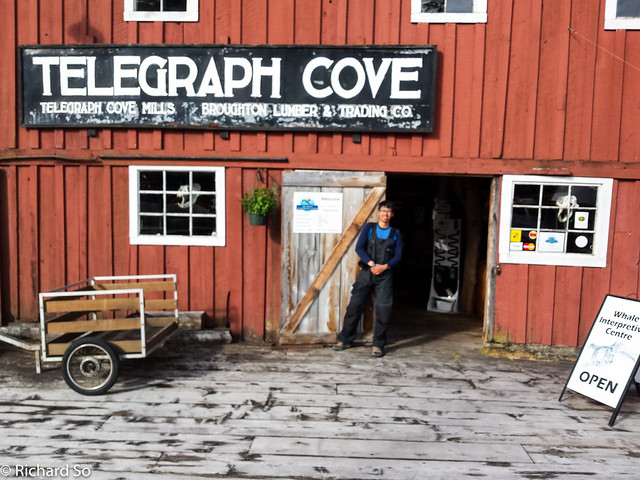
This is the famous whale museum in Telegraph Cove. My first visit here was in 2002 via the tallship Maple Leaf. On that trip, part of my sea cadet training program, we sailed from Comox to Kitimat over three weeks, exploring the Great Bear rainforest in detail.
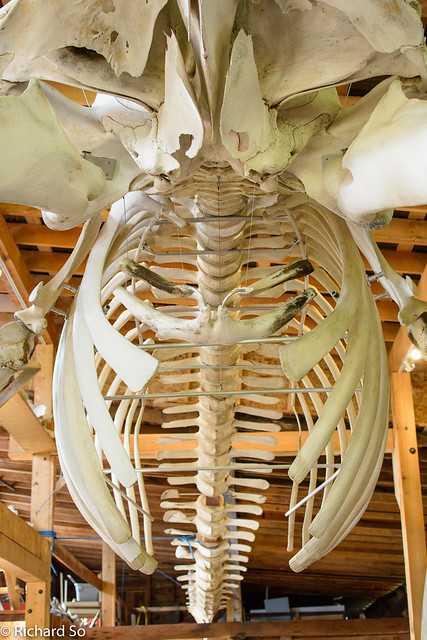
This is the skeleton of a fin whale that was struck by a cruise ship in Johnston Strait in 1999. It wasn’t until the ship reached Vancouver when they noticed the dead whale over the vessels bulbous bow.
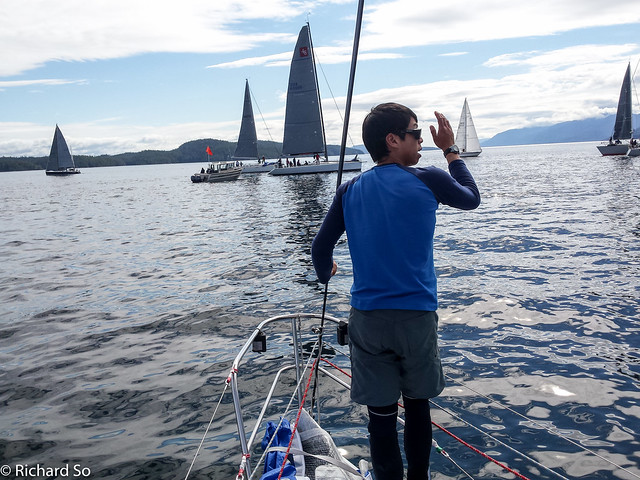
A light air start, drifting off the finish line outside of Telegraph Cove. What a contrast from the last two days. Shortly after this photo was taken, we hoisted the #1 part way, and then the luff rope jammed up in the pre-feeder. With less than five minutes until race start, I had to cut off the pre-feeder from the headfoil. The sail went down below, another pre-feeder was attached, and the #3 was hoisted. A smaller sail, and not the right sail for the conditions pictured. Jason and I spent the next 30 minutes down below trying to wrestle the sail out of the jaws of the pre-feeder. Ultimately, Jason had to take a knife to his brand new sail to free it. I taped it up, dragged the sail on deck and back up it went.
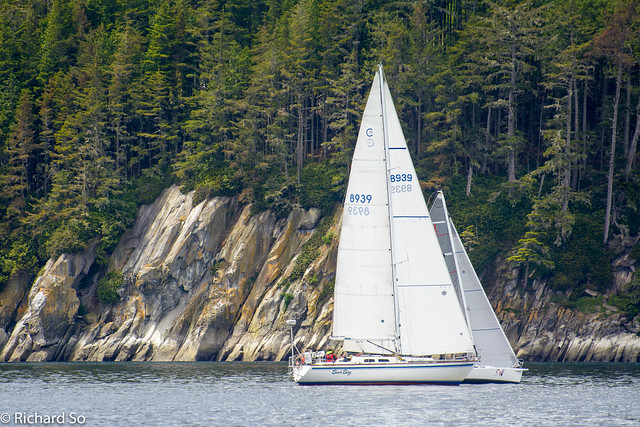
Sailing around Haddington Island.
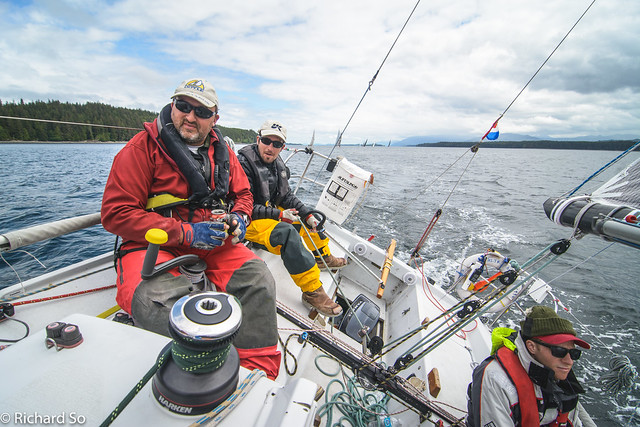
Despite the poor start with the sail issues, we were actually in a good position on the left side of the course at the start and stayed in front of the fleet. Finally!
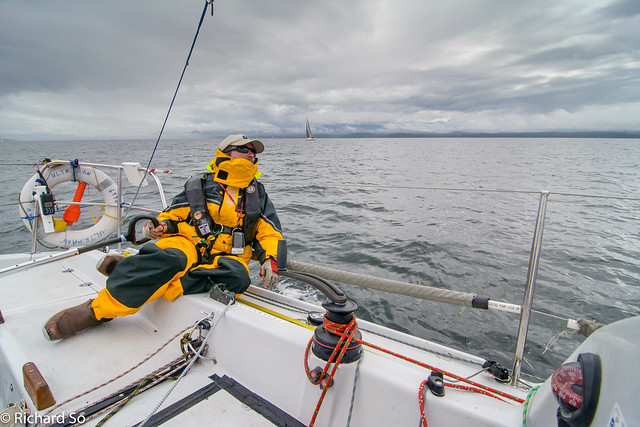
Andrew in the zone, working the shifts and fickle light air heading northwest in the Queen Charlotte Strait.
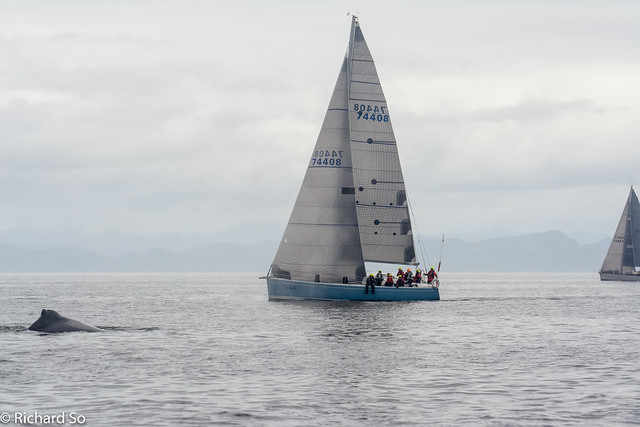
And then we saw the first whales of the trip. This was a humpback whale in Queen Charlotte Strait. Earlier in Johnstone Strait, there were also dolphins swimming alongside the bow.
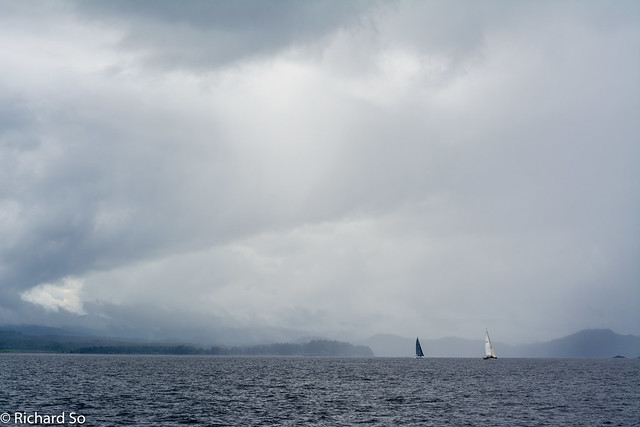
The only time it rained for the two weeks around Vancouver Island. Aside from a few light showers here, the weather was spectacular the entire time.
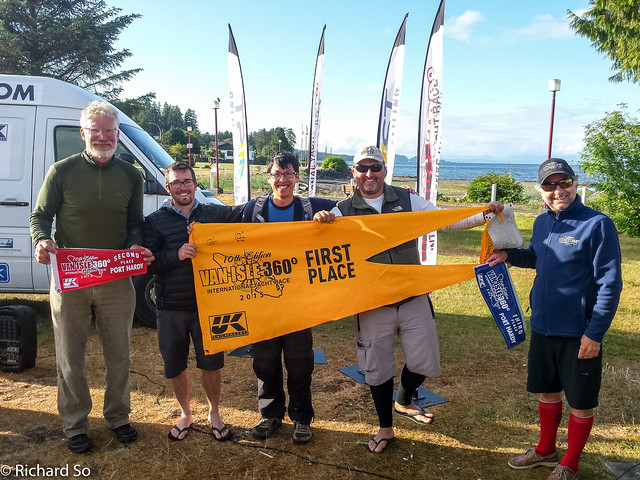
Celebrating a first place in PHRF Div 3 at the award ceremony in Port Hardy. Later on, the results changed and we were 2nd/13 in Div 3, correcting behind Back Bay. We finished at 17:25:33, with an elapsed time of 6:55:33.
Leg 6: Port Hardy to Winter Harbour
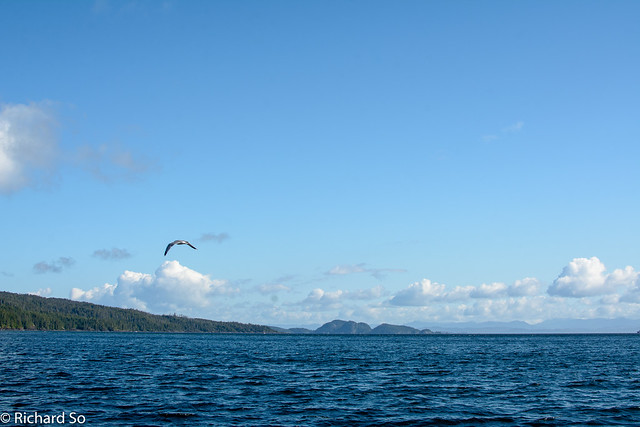
Looking north at Goletas Channel and Doyle Island. From here, we would sail north, turn left into Goletas Channel, reach across the infamous Nahwatti bar where the ocean swell meets a shallow sandbar, around Cape Scott, and then down the west coast to Winter Harbour, inside Quatsino Sound.
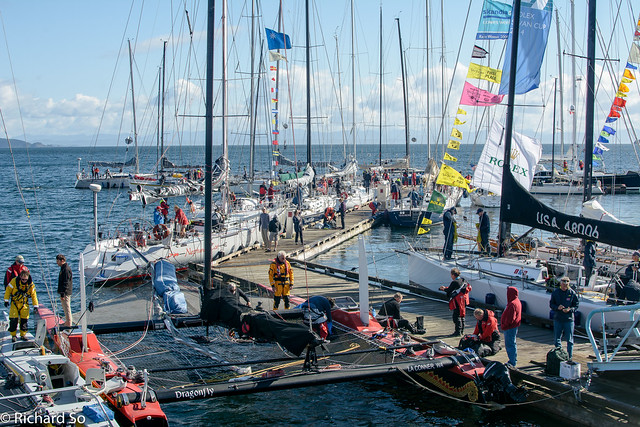
The VanIsle 360 fleet setting off from Port Hardy. Dragonfly is the fastest boat in the fleet, a Formula 40 catamaran. There were a total of three multihulls that started the race from Nanaimo, but one of the boats ran aground in the heavy winds on the second day of the Johnstone strait gale.
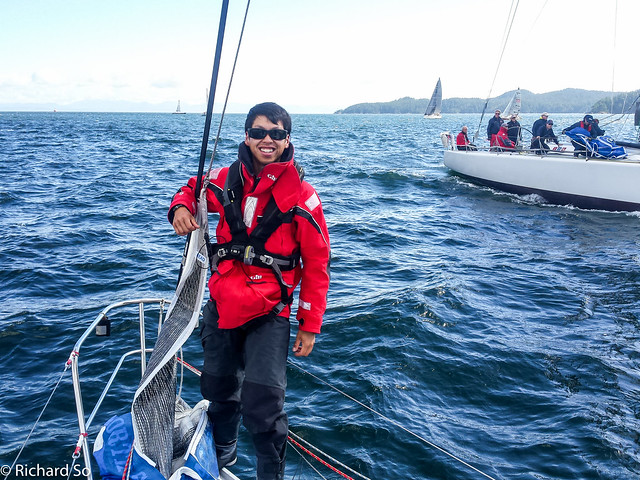
Race start. I should be looking out for other boats, not at the camera…
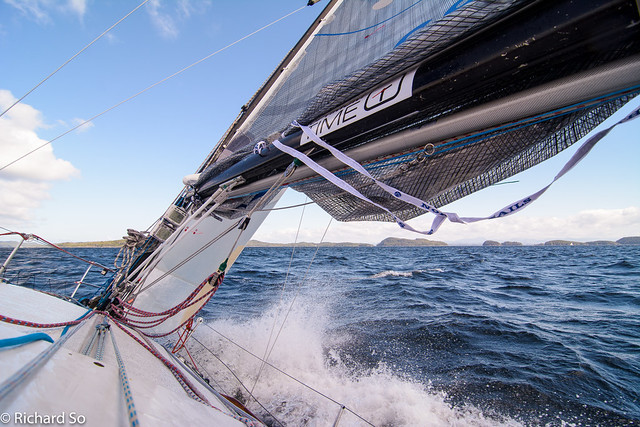
Bashing into the tide and wind in Goletas Channel, with the #4 and a reefed main. We were forced to do two back-downs here. This involves stopping the boat, then forcing the mainsail to the wrong side so the boat begins to drift backwards. The objective here is to free the keel from any kelp that the boat may have run over.
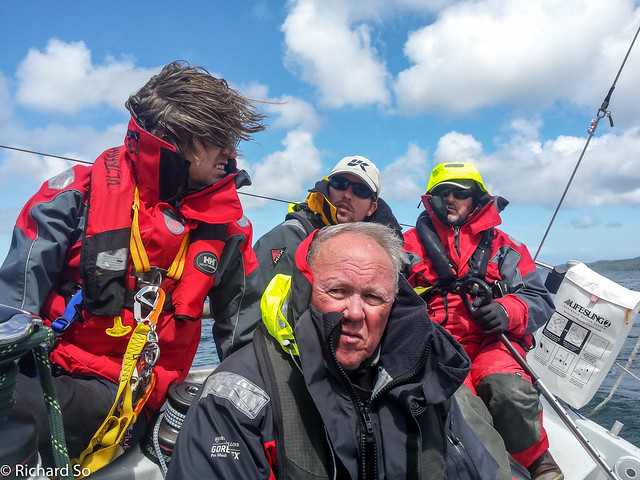
Massimo, Tom, Andrew and Skipper. Massimo had just arrived from New Zealand to sail the outside legs with us.
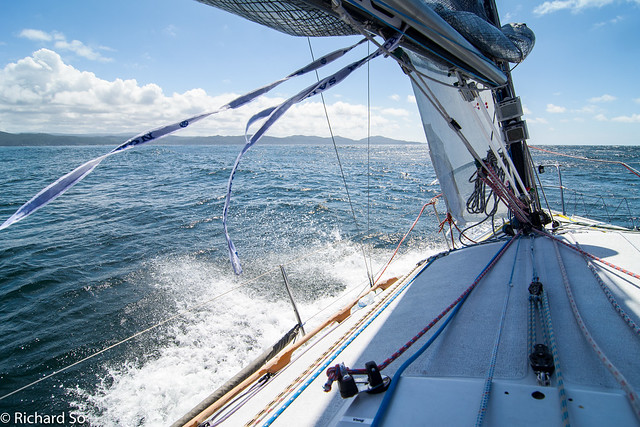
Beating upwind in Goletas Channel with a reefed main and the #4
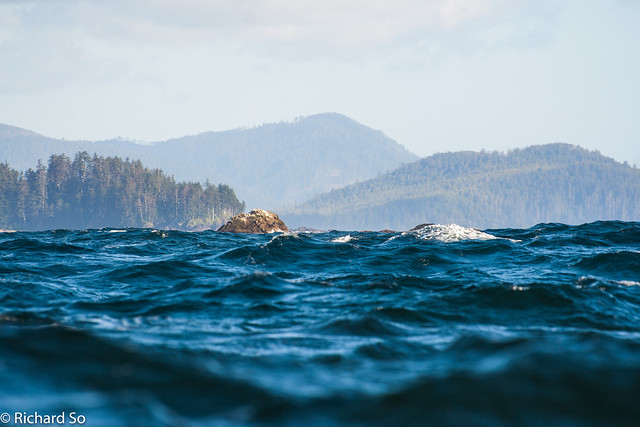
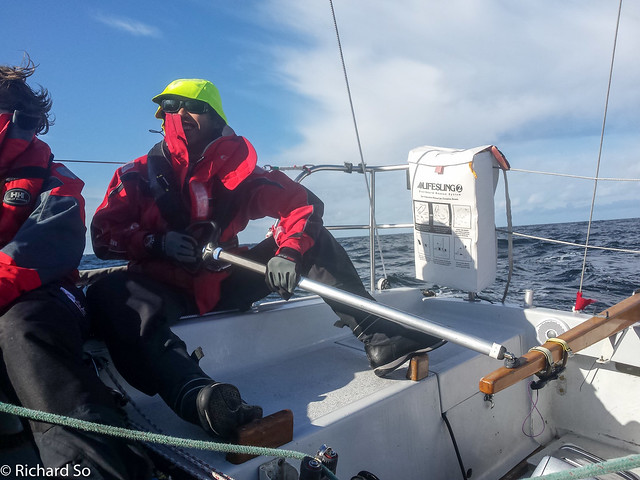
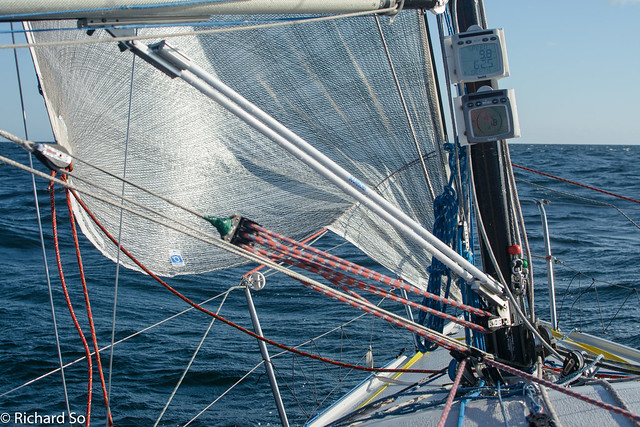
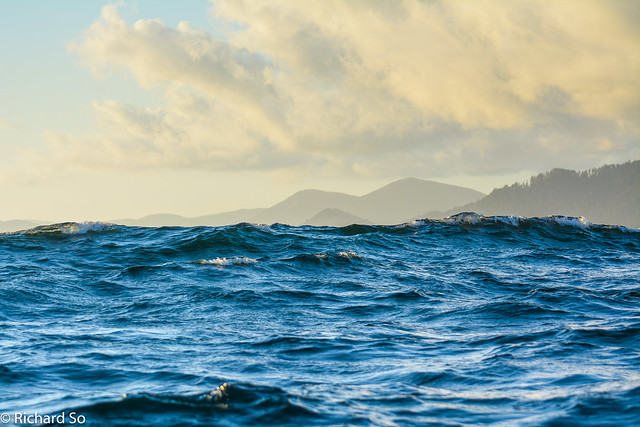
Looking back at Cape Scott as we make our way to the south

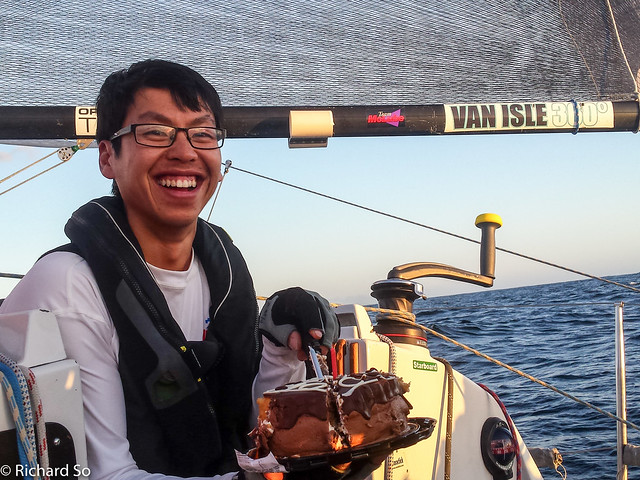
It was also my birthday today, June 12th. When we arrived in Port Hardy, I went off to the one grocery store in town to find a cake for myself. I wanted to keep the cake a surprise, so I had to come up with some unconvincing excuses on why I needed to go to the grocery store after Tom had already stocked up on supplies. Once we were settled in and sailing downwind in the Pacific Ocean, going at 10 to 15 knots, I went down below and found the cake that I had stowed away. I tried to light the candles, but they blew themselves out the moment I stepped out into the cockpit.
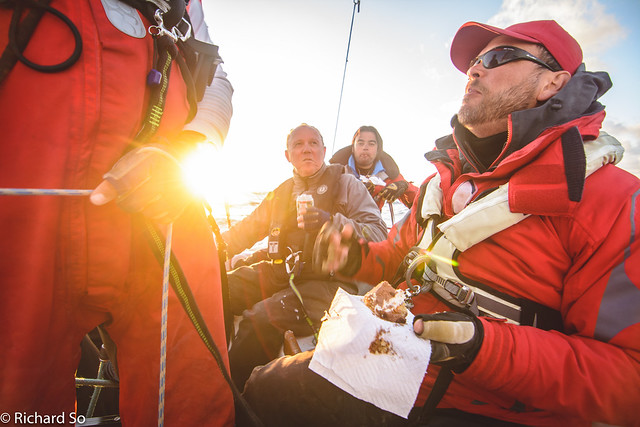
One hand for the boat, one hand for the cake, still racing and trying to catch up to our competitors.
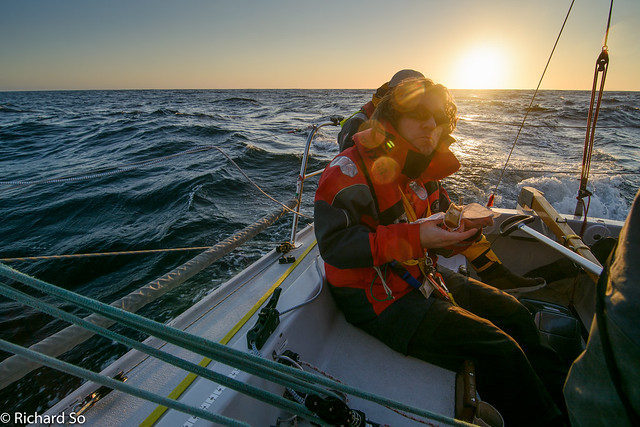
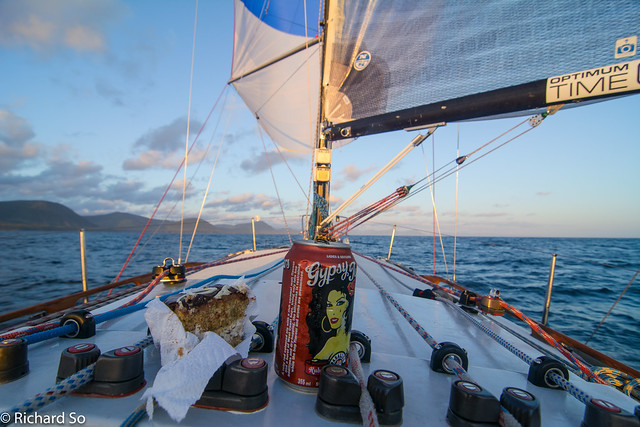
Not a bad way to spend my birthday, but it was going to be a long night!

Looking back at the north end of Vancouver Island

Evening light on the spinnaker

Surfing downwind at ten knots, with eyes on Interim and Thursday’s Child ahead. We were hoping to catch up to them, and the only boat behind us was the Olson 30, Beats Per Minute.
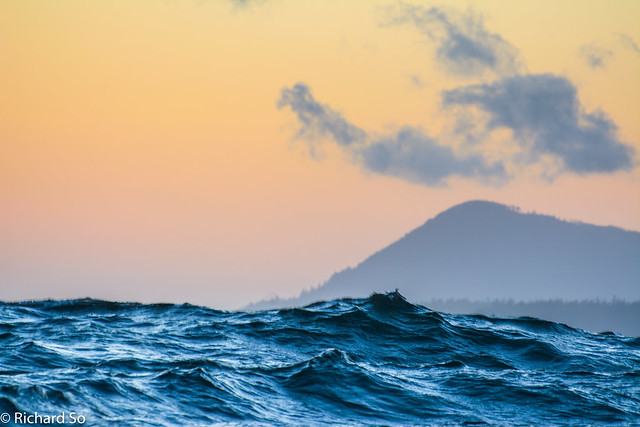
Waves and Mount St. Patrick, above San Josef Bay.
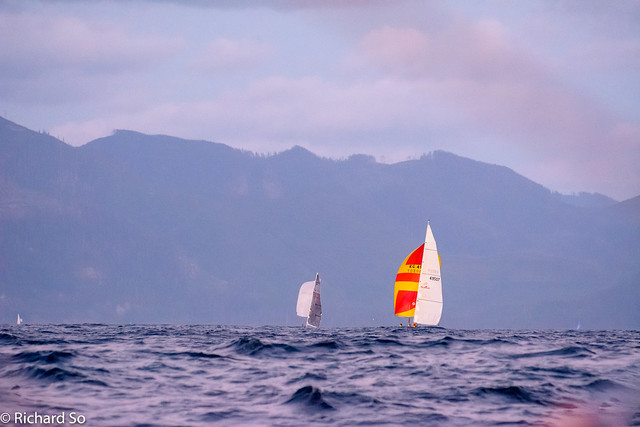
Catching up to Interim and Thursday’s Child. We were so close to getting in front of them, but the wind died at the entrance of Quatsino Sound. Thursday’s Child and Interim were able to catch the last bit of breeze in the dark, finishing at 23:08:58 and 23:16:28, respectively. They were only boats length away from us. But we would end up drifting less than 200 metres from the finish line, changing sails from the #1, to the light asymmetrical kite to the drifter and back. After sailing in circles in the light air, with the tide pushing us back into the ocean, Ultraman II finally finished at 00:05:02, 12th/13, with an elapsed time of 14:05:02. The night wasn’t over yet, as we would standby at the finish line for the Olson 30 in case they needed help motoring into Winter Harbour. Somewhere off Cape Scott, their GPS unit suffered water damage, on top of having engine issues right off the Port Hardy dock.
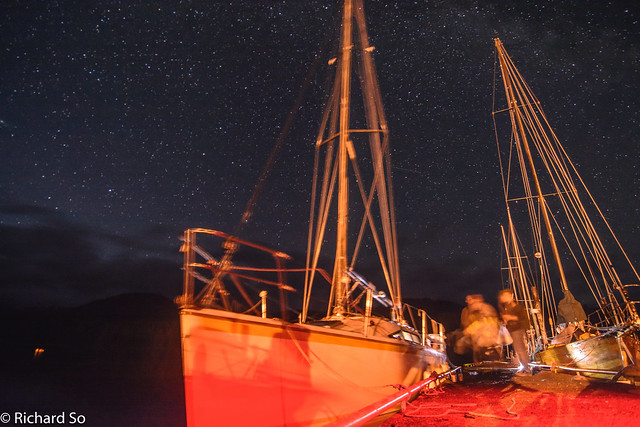
Finally at the dock at Winter Harbour, photo taken around 2am, with the glow of dock lights on the rigging and the unpolluted view of the night sky. The only access to this small community is by boat, or a long drive on logging roads from Port Hardy.
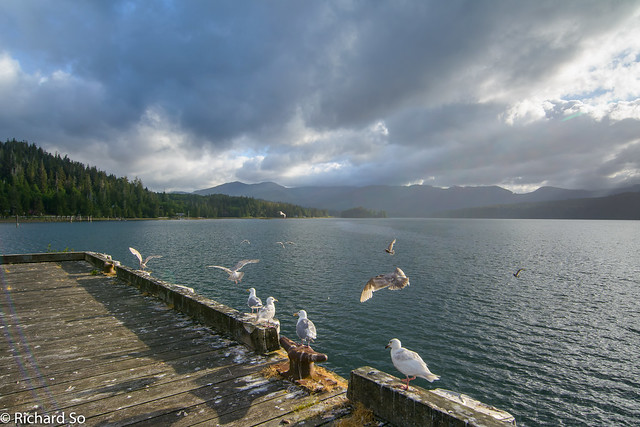
Views of Quatsino Sound from the dock at Winter Harbour. This is popular fishing spot, and we talked about chartering a boat to fish on this rest day. That didn’t happen, and I went for a long run instead with Elliot, who joined Thursday’s Child for the outside leg. Any more sailing than that would be too much time off from his training schedule. Meanwhile, I was also trying to train for a trail race in July, and these two weeks were my early “taper.” We tried to run along logging roads back to the Pacific Ocean, but realized that it would be longer than a 25km run from Winter Harbour to Grant Bay and back. So we turned around somewhere in a maze of cutblocks and logging road intersections and ran back to Winter Harbour.
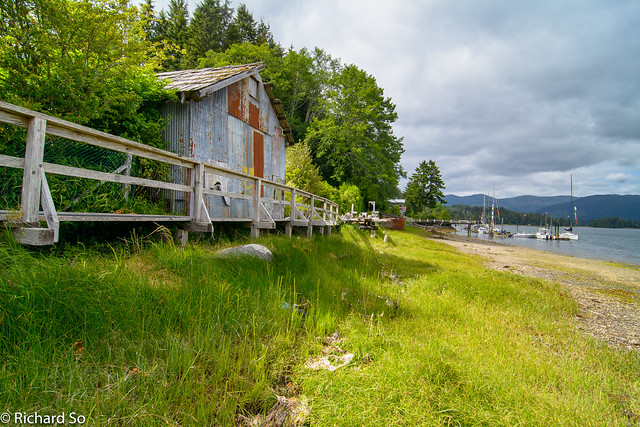
A boardwalk connects the buildings in Winter Harbour, the only way around the small community before the road was built.
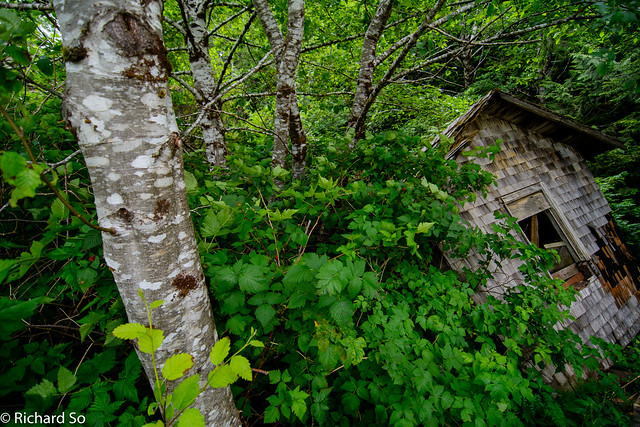
This building off the boardwalk has seen better days, and is slowly disappearing into the forest.
Leg 7: Winter Harbour to Ucluelet
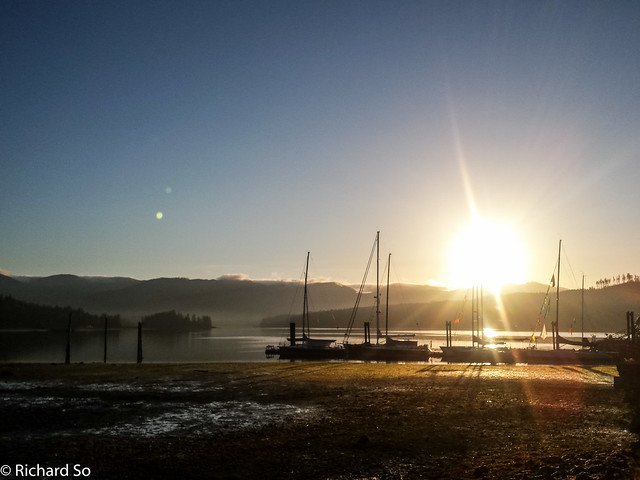
Early morning in Winter Harbour.
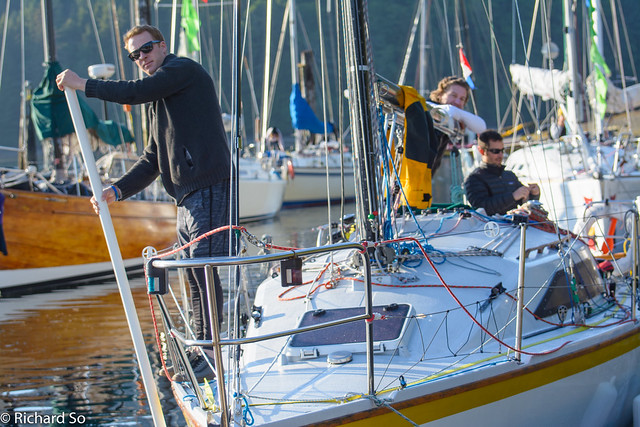
Scrubbing the hull of Ultraman II, and doing other last minute preparations for the big trip down the coast. Our provisions were fairly simply, sandwiches for lunch, freeze-dried meals for dinner and breakfast, cup-noodles, coffee and tea, chocolate and water and gatorade and coke.

Motoring out into Quatsino Sound, with the Canadian Coast Guard vessel escorting the fleet down the West Coast. The leg from Winter Harbour to Ucluelet is 138.1 nautical miles, the longest leg of the race. The race schedule allows 2.5 days to finish this race, in event of light air. But with the wind forecast of 20-30 knots northwesterly, we were planning to finished sometime the next morning in Ucluelet.
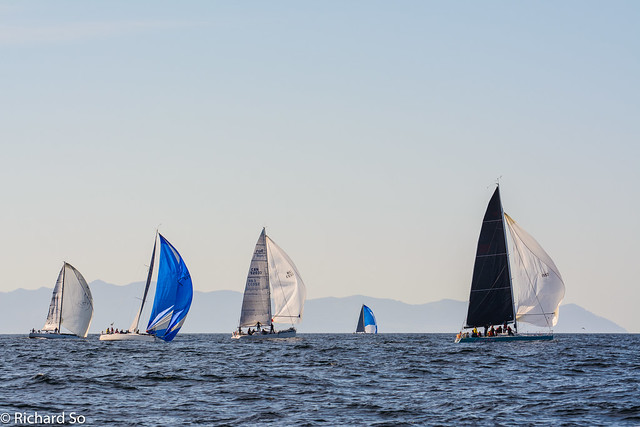
The fleet taking off, moving slowly in 10 knots north of the Brooks Peninsula. The western tip of Brooks is on the right side of the photo. This geographic feature sticks 10 miles out of Vancouver Island, and records the strongest winds on Vancouver Island.
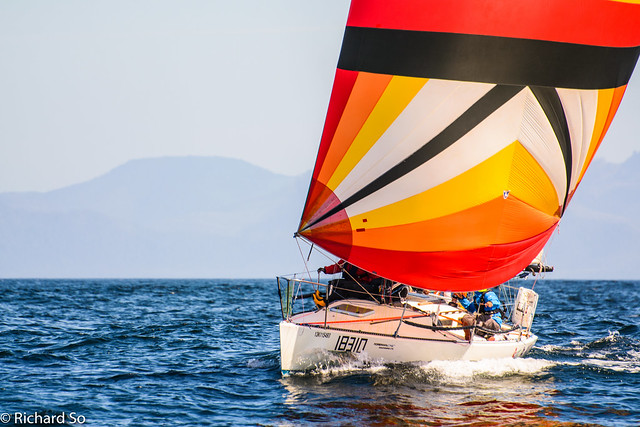
Beats Per Minute, Olson 30 sailing on Leg 7. They were the youngest crew by far, and put in an impressive effort in getting the boat ready and then completing the race despite some setbacks along the way.

Radical Departure, 1D35, disappearing in the Pacific Ocean swell.
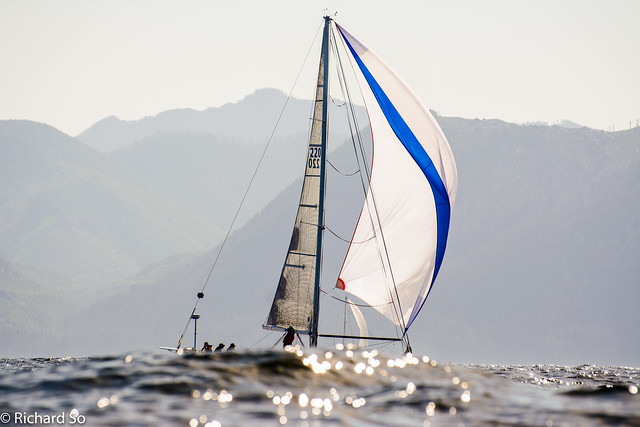
You can barely make out the crew of Cantina, Catalina 42 in these beautiful ocean rollers. The same northwesterly that we had been bashing upwind into on the east coast of Vancouver Island for the past week, formed these rollercoaster waves that we caught a downwind ride on.
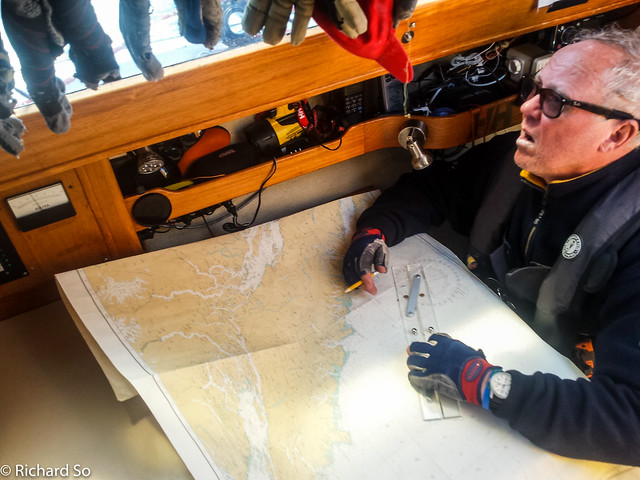
Tom navigating with a chart of Vancouver Island. Our plan was to sail approximately 15 miles offshore, along the edge of the continental shelf, a balance between sailing in enough wind, far enough offshore from the south to north current, and minimal extra distance covered by going further outside.
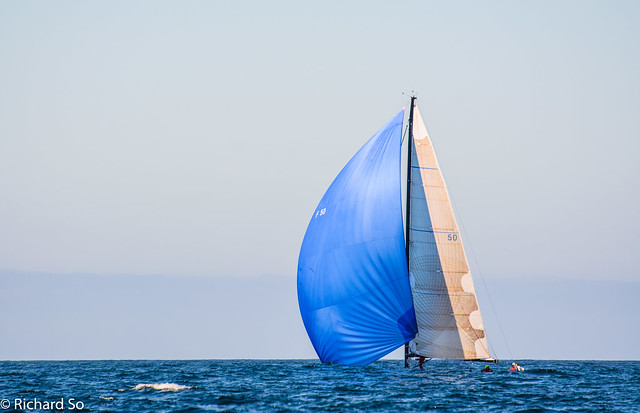
You know the ocean rollers are big and smooth when a Beneteau 50 disapears from view. This is Tiger Lily, which was crewed by my friends Valerie (on the inside) and Stu (on the outside).
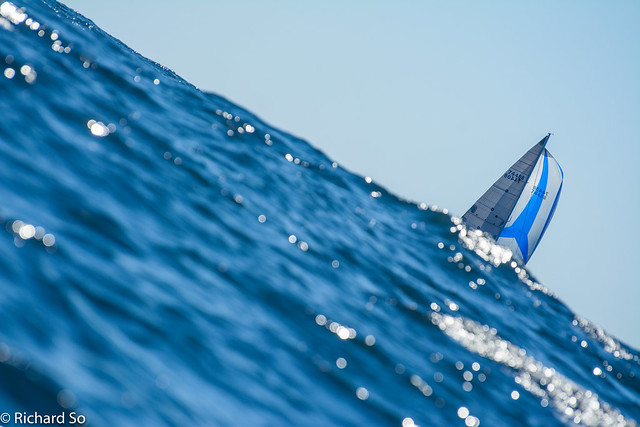
Another perspective of the waves, this time its Rubato, a Hanse 40 hiding in the waves. They would go on to winning the overall race in Division 3.
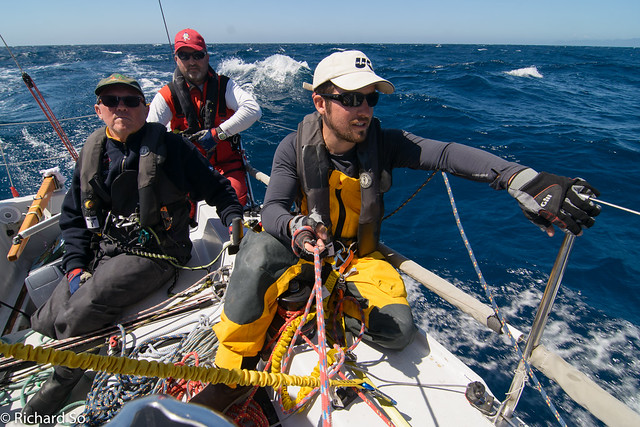
The excitement was building up as we sailed into the higher pressure offshore, and steady winds in the 20-30 knots range. Tom, Skipper and Andrew would take turns driving, and each one successively hitting a new top speed on the boat. Andrew took the win, when Ultraman II hit 19.7 knots surfing off one wave. Everything else will be boring from now on.
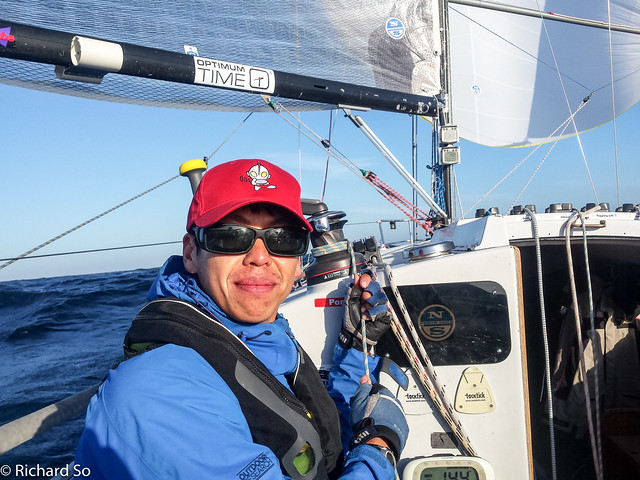
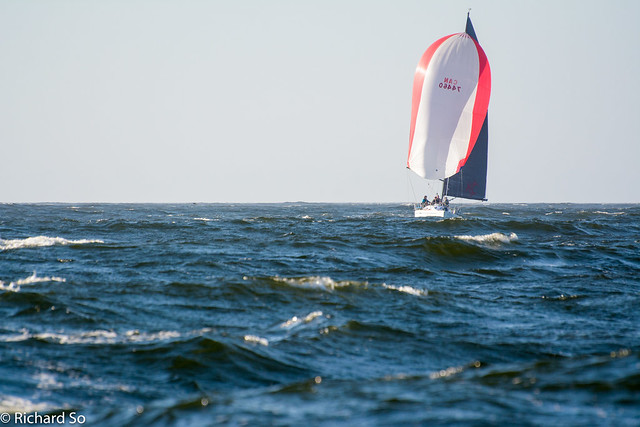
Sailing ahead of Contagious, a Beneteau 36.7
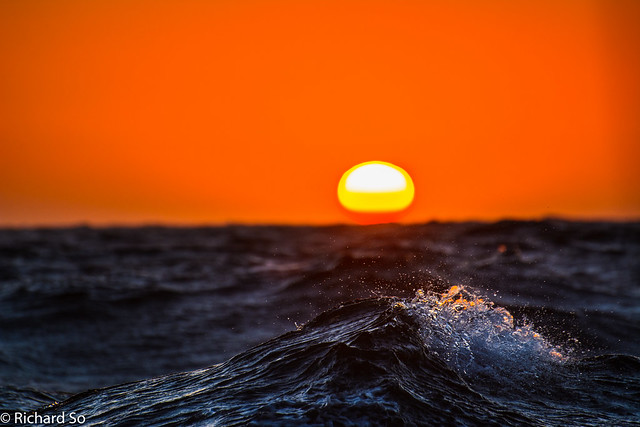
The ocean stirs the heart, inspires the imagination and brings enternal joy to the soul – Robert Wyland. A beautiful Pacific Ocean sunset.
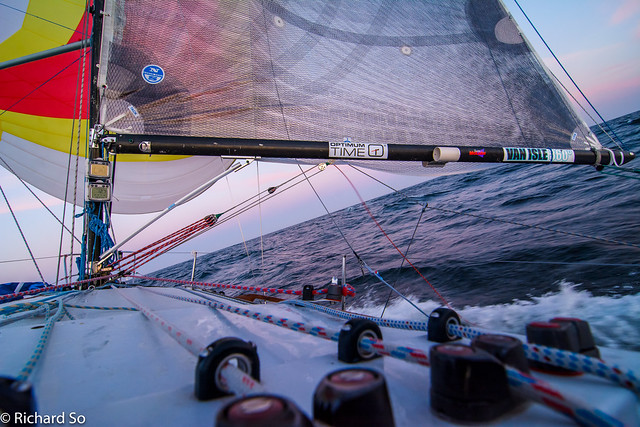
Sailing with the fractional kite, in 25 knots apparent, going at 12.7 knots. In the heavy air, we switched down to this smaller kite. We were just on the verge of control with this kite up. But in the heavy air, gybing was a challenge. After one or two botched gybes, with the spinnaker wrapping around the forestay and a broach, we switched to more conservative method of a drop, gybe, hoist.
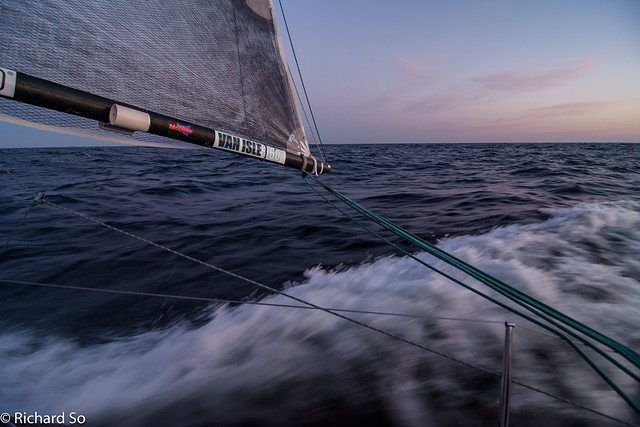
Ripping down the west coast. Some very awesome sailing happened here.
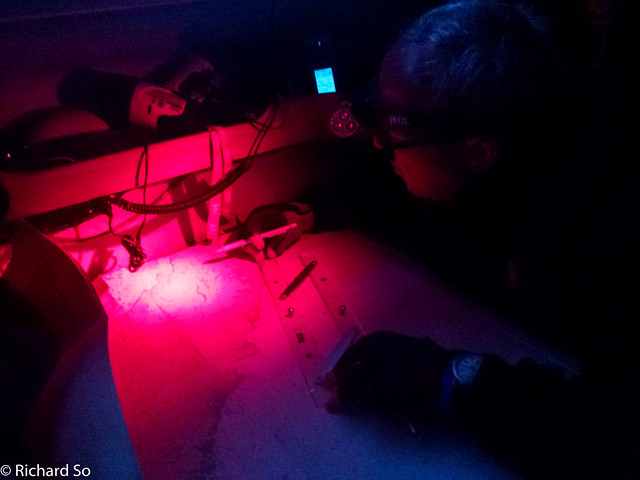
Navigating at night. Every hour, boats were required to check in on the VHF radio to report their location. We sailed with six crew on this leg. We sailed a four on, two off schedule. This meant that two people slept down below for two hours, and the other four were on deck. When it was my turn, I went down below and crawled into the claustrophobia-inducing space in the port berth behind the head.
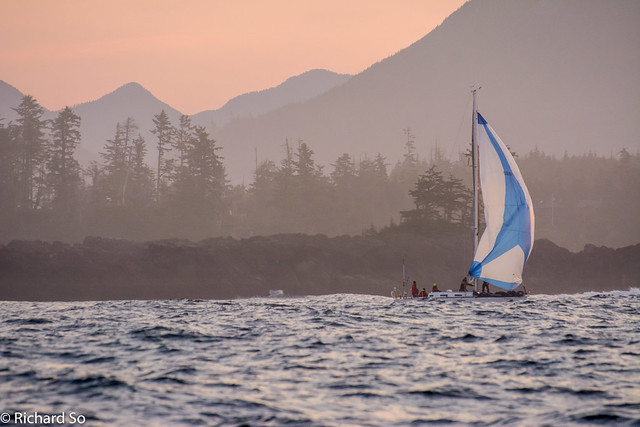
Sparkle Plently, Beneteau 36.7 off the Ucluelet shoreline. In contrast to the last twenty hours of sailing, the wind died outside of Ucluelet in the early hours of the morning, with collapsed spinnakers and boats bobbing up in the swell.
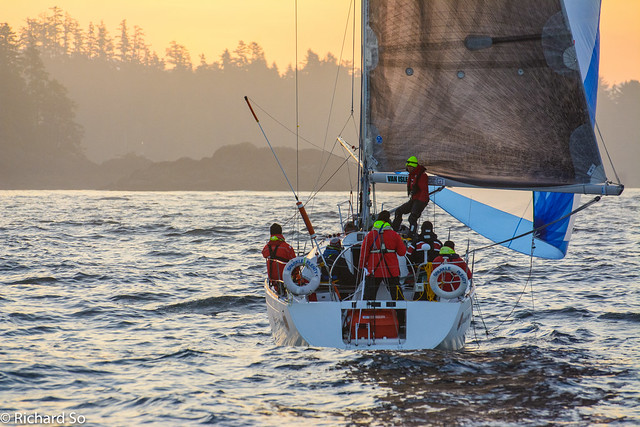
Drifting towards the finish line, off the Amphitrite Lighthouse
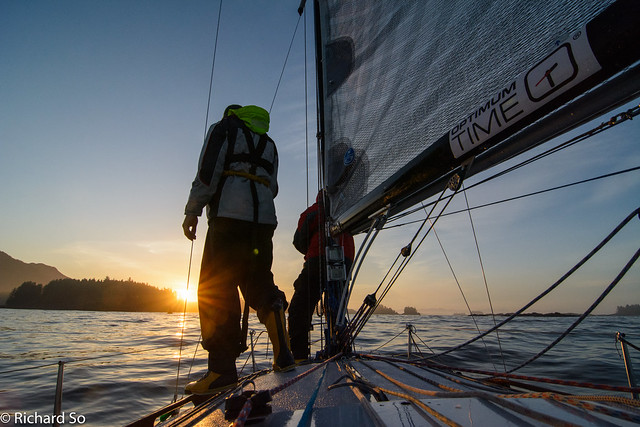
Catching the sunrise outside of Ucluelet. We finished at 5:32:34, with an elapsed time of 20:32:34, and placed 4th/13 in Division 3. We were 12th/42 boats in the PHRF boats.
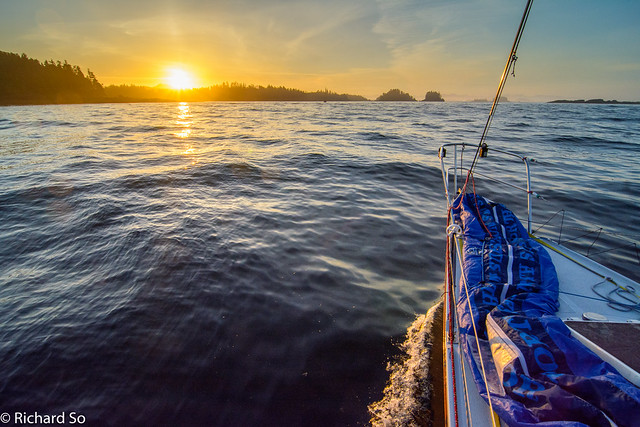
A beautiful morning outside Ucluelet, and I was looking forward to some sleep at this point.
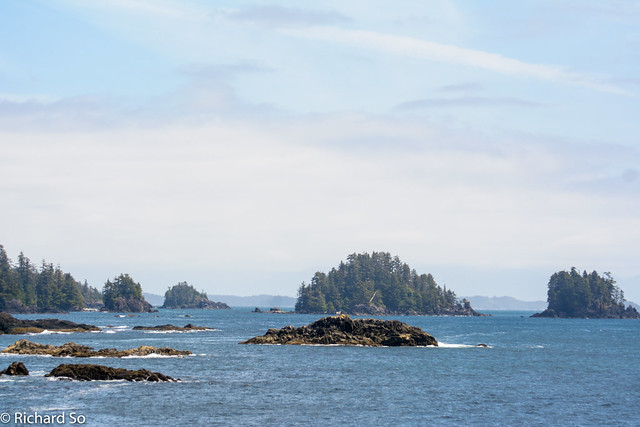
A view from the Wild Pacific Trail, a network of trail along the Ucluelet Coast. We had two days to hang around in Ucluelet since we finished early in the morning. I took this time to do some more training for my race.
Leg 8 – Ucluelet to Victoria
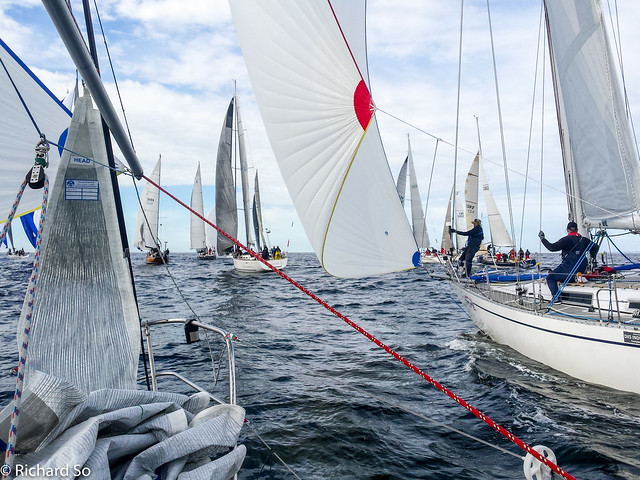
Light air start off Ucluelet, with the asymmetrical kite. This leg was 98.1 nautical miles, the second longest leg of the race. Down the coast, into the Juan de Fuca Strait, around Race Rocks and then finishing outside of Victoria Harbour.
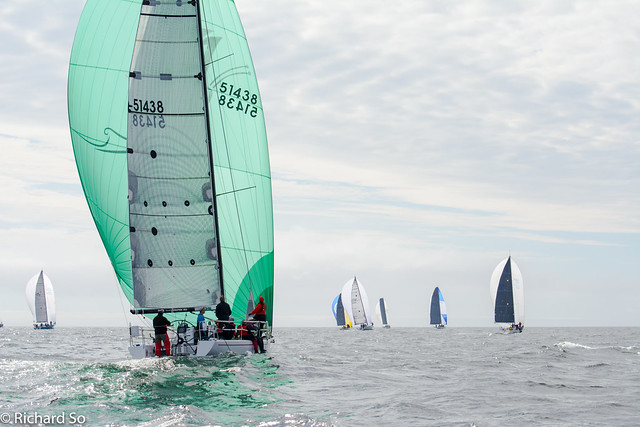
Flatter water and not as much breeze a few days later
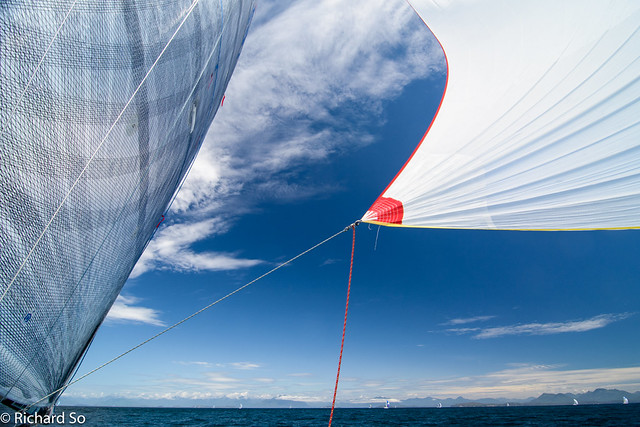

The skipper catching a break down below, amongst all the sails.
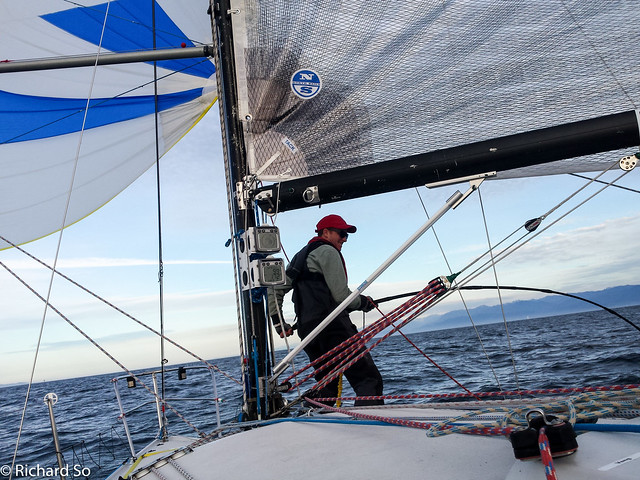
Callum using the “whip” to check for and to free any kelp caught on the keel. At the end of the tubing was a long rope, and the idea was to go forward on the boat, drop the rope into the water at the bow and let the rope run down along the hull. It was always entertaining when the “whip” came out, even with its questionable effectiveness.
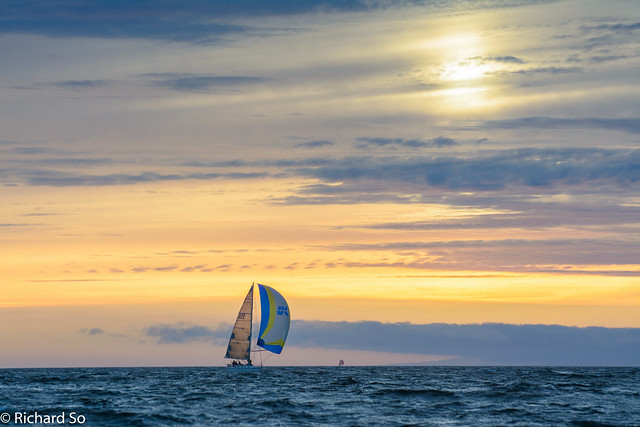
Sunset in the Juan de Fuca strait, somewhere near the western entrance.

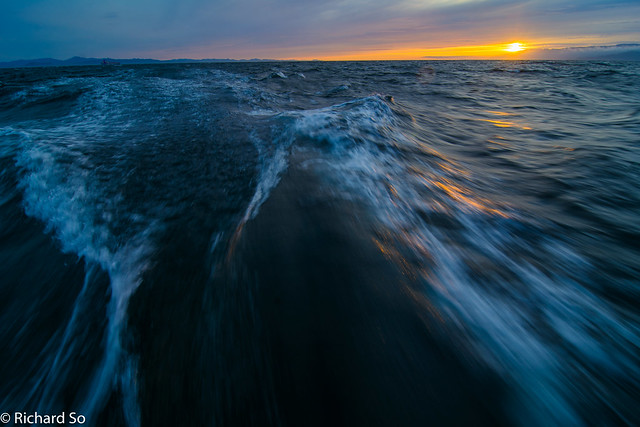
Ripping along in the Juan de Fuca strait. It was a beautiful sight to look back at the sunset, with the water streaming off the rudder as the boat sliced through the ocean.

The boat and crew were last here in May, during the Swiftsure Race, and we did not go as fast while sailing into a dying breeze. This time around, we were sailing right into gale force winds off Race Rocks. It was only 20-25 knots here, but in the steady mid 30’s off Race Rocks.
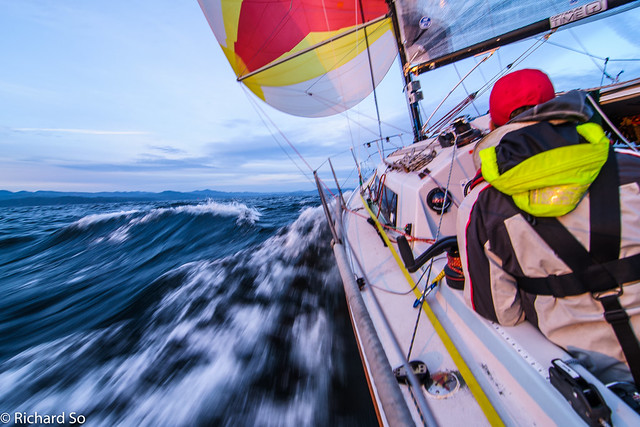
Sailing with the chicken-kite, and going fast.

Beautiful sunset in the Juan de Fuca Strait
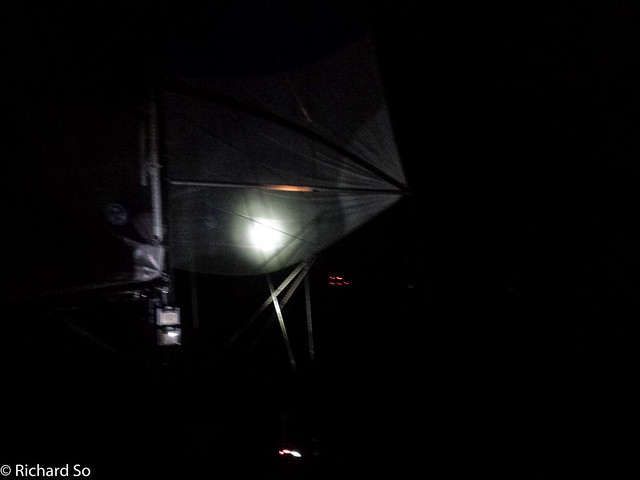
Sometime after midnight, still ripping along in the Strait. As we approached Race Rocks, we doused the spinnaker, and sailed with the #4 around the outside of Race Rocks.
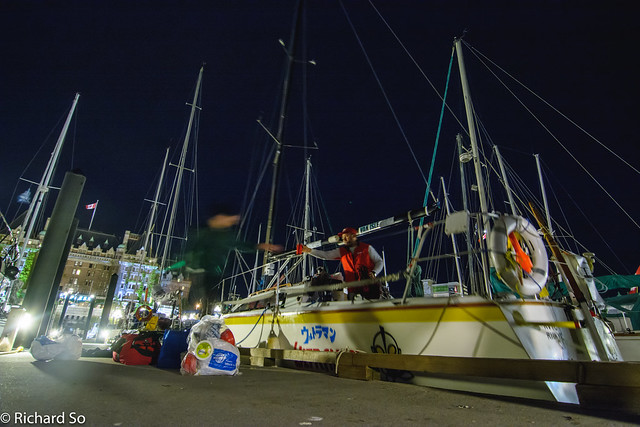
We finished at 0:56:38, with an elapsed time of 14:56:38, and 8th/13 in Division 3. Unloading gear at the government dock in front of the British Columbia Legislature. Unfortunately, our sistership Interim, another Ross 930 but with a deck stepped mast did not complete this leg. They sailed inside of Race Rocks, and suffered a rig failure in a 40 to 44 knot gust. Here’s a recount from John Schnellback, the skipper of Interim.
“Well Van isle 360 defiantly tested the lighter disp boats this time around. Interim unfortunately lost her rig. We were running a Frac A kite, full main thru Race Passage about 1.45 AM . Boat was on rails for the previous hour and feeling in control . Finally were in the running on this leg having made good advances all day and many passes down the straight. As we entered Race Rocks there was minimal current 1.5 max. The first gust knocked us over we rounded up and we tried to get bow pointed down to no avail. Gust two came in around 38 knts Starboard spreader hit the water we rounded again and tried to get bow pointed down still to no avail. We estimated the third gust at 40 – 44 knts. This time Starboard spreader and masthead hit the water as she was rounding up the lower port spreader let go and the mast slowly toppled over on the Starboard side.”
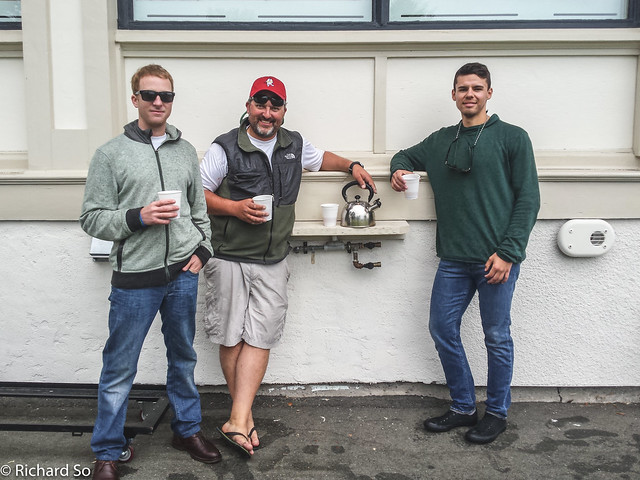
There was another lay day in Victoria, capped off with dinner and awards at the Royal Victoria Yacht Club. A photo of Callum, skipper, and Jordan inconspicuously enjoying a drink from the kettle.
Leg 9: Victoria to Nanaimo
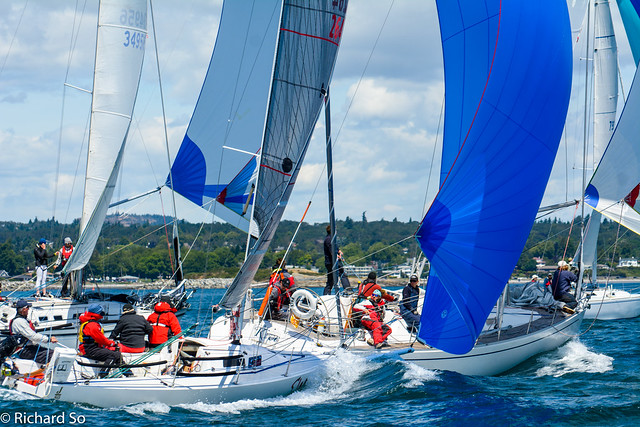
It was a beautiful day off Clover Point for the final start of the Van Isle 360, with 59.9 nautical miles to Nanaimo. The day started off with a good 15 to 20 knot breeze, and tight racing. Immediately off the start, half the fleet took the shorter course and sailed inside the Trial Islands, and half the fleet stayed outside.
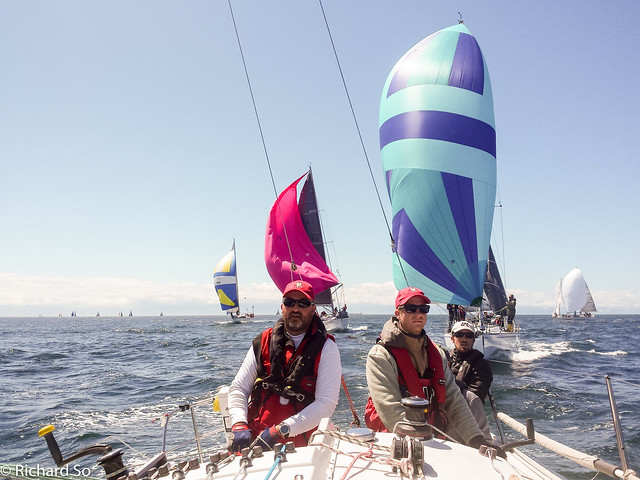
Skipper and Callum and Andrew somewhere off Gonzales Point
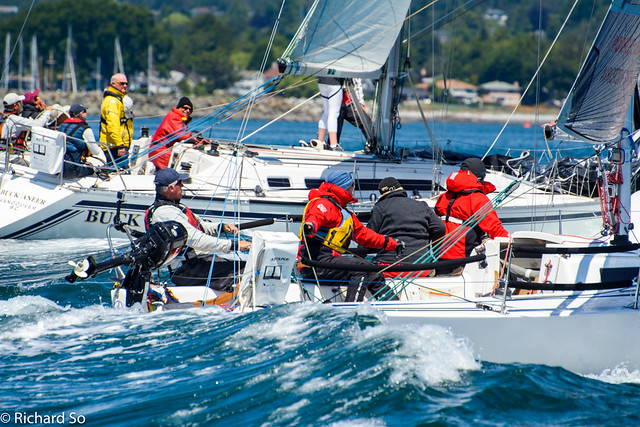
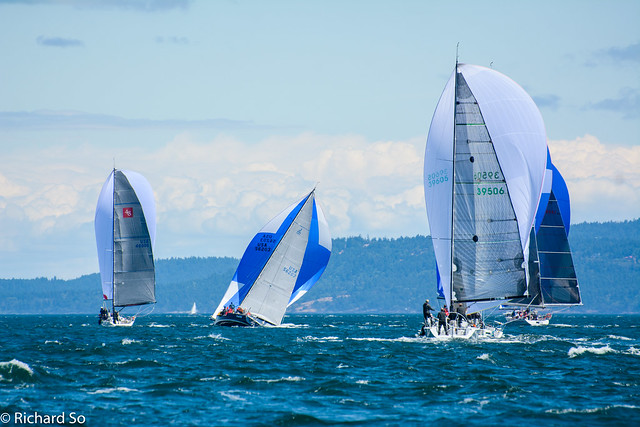
Sailing into the southern Gulf Islands

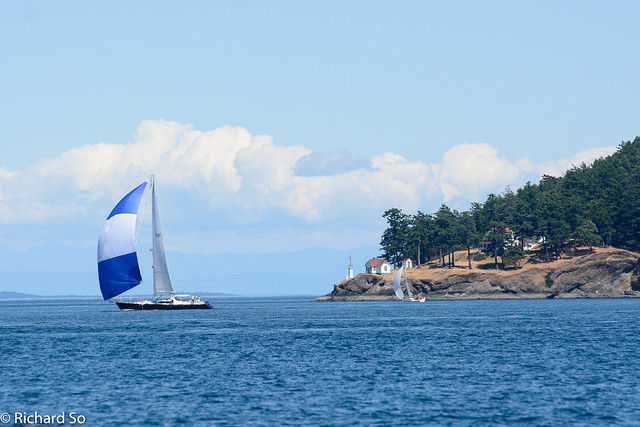 Calmer waters in the Gulf Islands
Calmer waters in the Gulf Islands
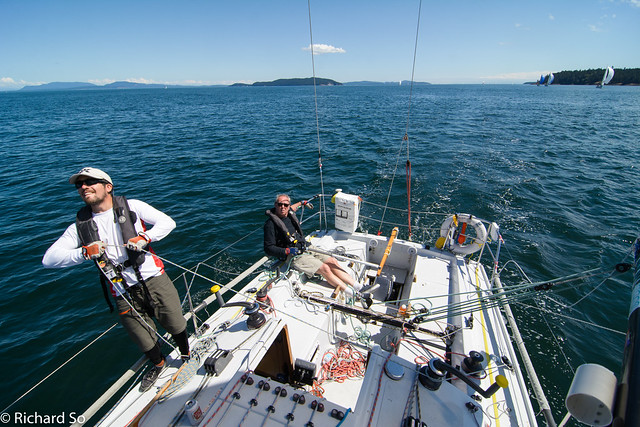
Drifting along in 5 to 10 knots.
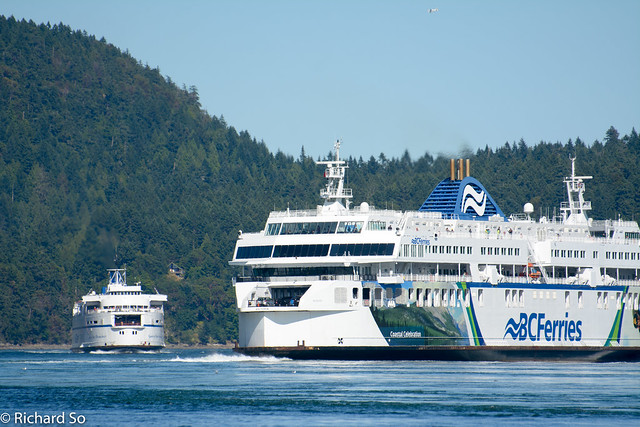
Ferry traffic in Active Pass. There are a few strategies for sailing from Victoria, through the Gulf Islands, to Nanaimo. The longest way is out via Boundary Pass to the south end of Saturna Island and into the Strait of Georgia, rarely a winning strategy. The most common options seem to be either sailing through Active Pass, or Porlier Pass, or even Dodds Narrow. The problem is that you need to get through these tidal gates at the right time. Given the light air in Tricomali Channel, we thought there was a chance that we wouldn’t make it to Porlier Pass in time to transit. After much debate, we decided to follow some other boats through Active Pass, where we were flushed out into the Strait, nearly at peak flood with 5 knots behind us.
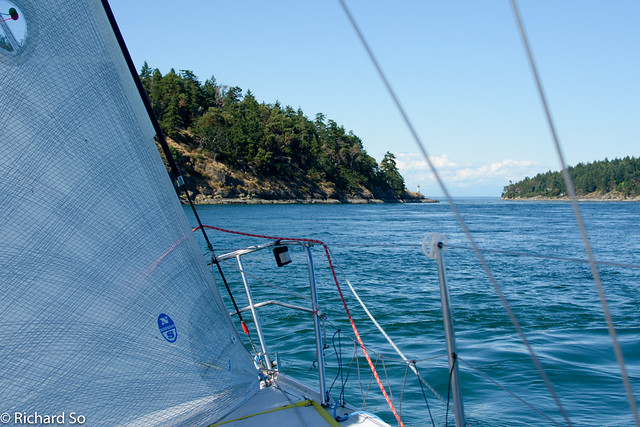
Getting flushed out of Active Pass under sail. Fun to do once…
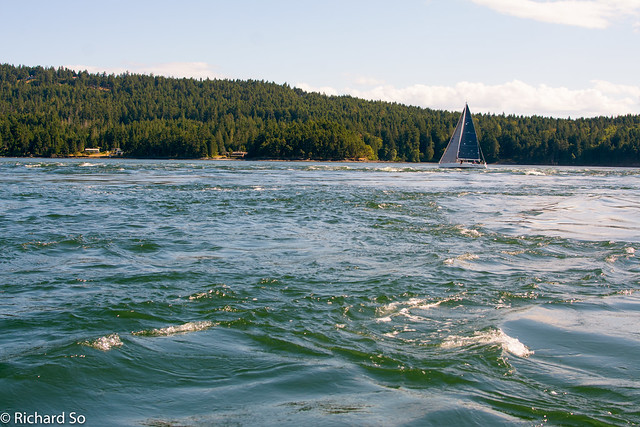
Look at that water moving around next to Time Bandit

Unfortunately, this strategy did not pay off. We sailed into glassy calm water on the eastern side of the Gulf Islands, with glistening blue water and not a breath of air around. Meanwhile, the boats that stayed inside, continued northwards with a thermal breeze between the islands. All of them, except for two boats (Thursday’s Child and Contagious who had a tacking battle in Dodd’s) were able to get to Porlier Pass and transit into the Strait. They also sailed into the same calm waters, but were in a better position as the forecast called for a northwesterly to build in the late evening. They would catch that wind before us.
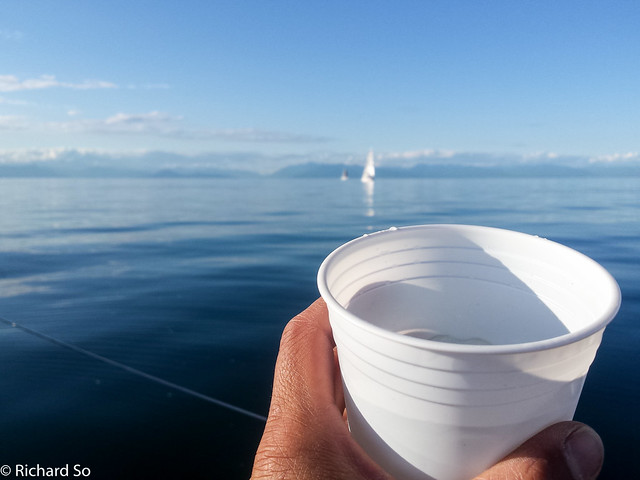
There was nothing to do at this point, except to hoist the drifter, and pour ourselves a gin and tonic to celebrate the trip around Vancouver Island.
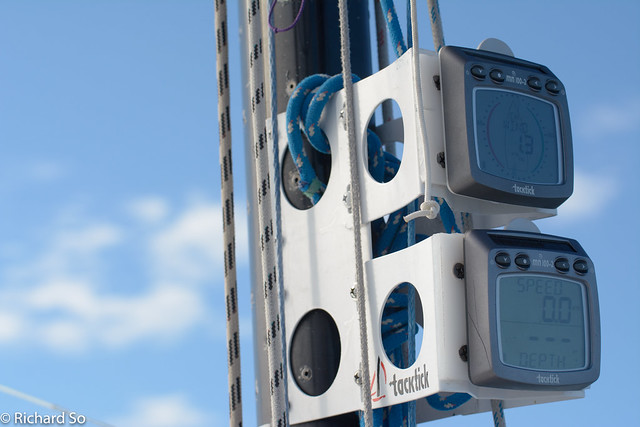
Apparent wind, 1.3 knots. Speed, 0 knots… Long night ahead.
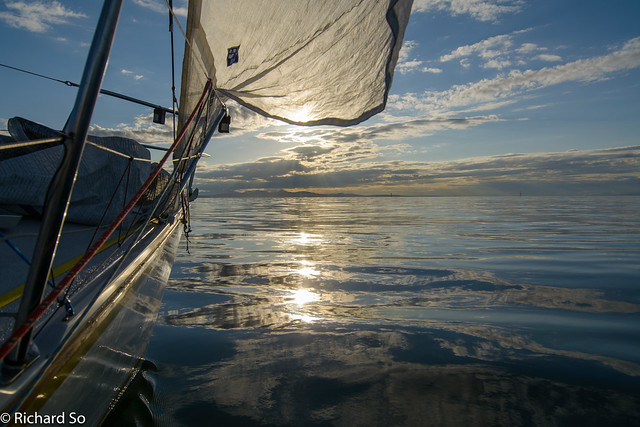
Drifting northwards in the beautiful calm water of the Salish Sea
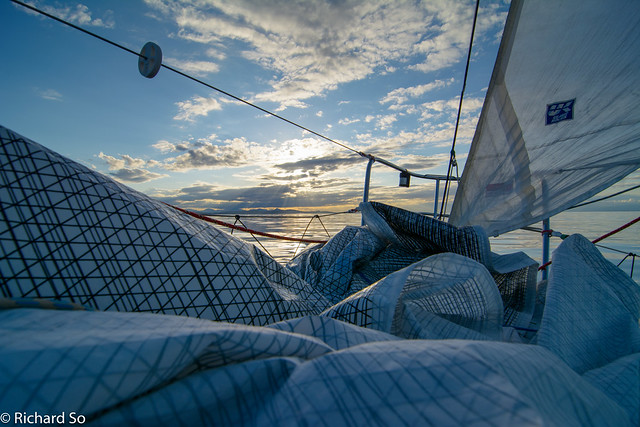
Drifter hoisted, with the #1 on deck.
 Raven catching the evening light
Raven catching the evening light
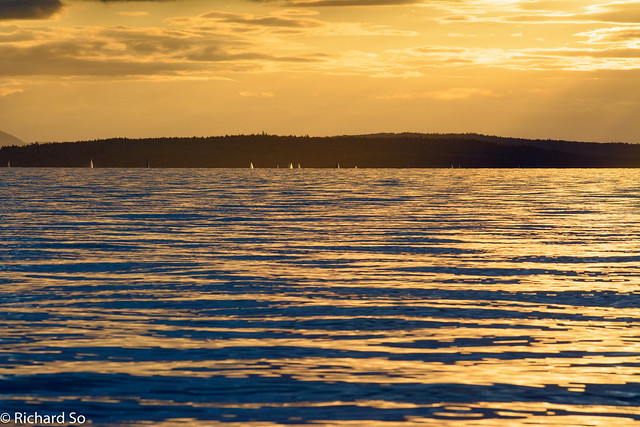
Looking north at the boats that had transited through Porlier Pass. At least we were in front of the boats that decided to go through Boundary Pass.

The last photo I took that evening. The wind picked up shortly after 10pm, with 15-20 knots right on the nose. A long night of short tacking the shore, working north past Galiano, Valdes and Gabriola Island. I remember seeing the bright white light off Entrance Island, thinking we were so close to Nanaimo. But we tacked back and forth in the dark and it felt like we were sailing in circles around the light station.
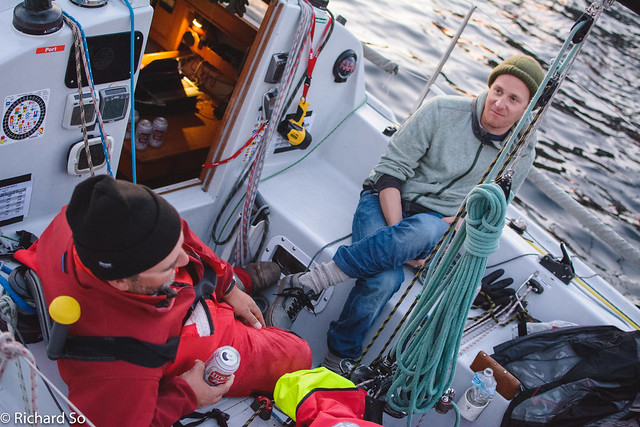
Ultraman II finished at 03:51:52, with an elapsed time of 15:51:52. We placed 7th/13 in Division 3.
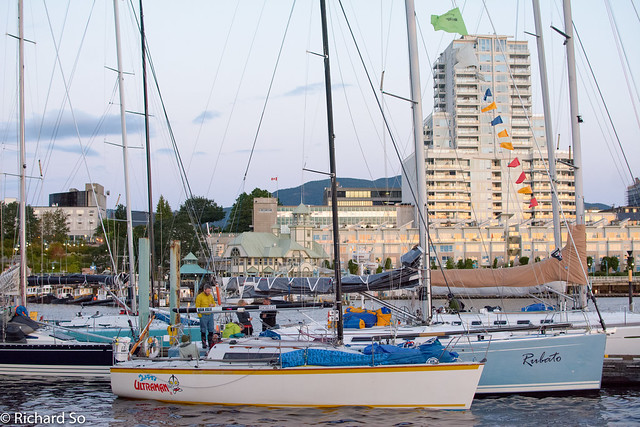
Ultraman II and Rubato back where they started from two weeks ago. Note the difference in size between the two boats, both racing in Division 3. In the overall standings, Rubato came 1st in Div 3, while Ultraman II was 10th/13 in Division 3, ahead of Thursday’s Child, Beat’s Per Minute, and Interim.
Thanks for reading to this point! I can’t wait for the next big sailing adventure, whatever and wherever that might be!
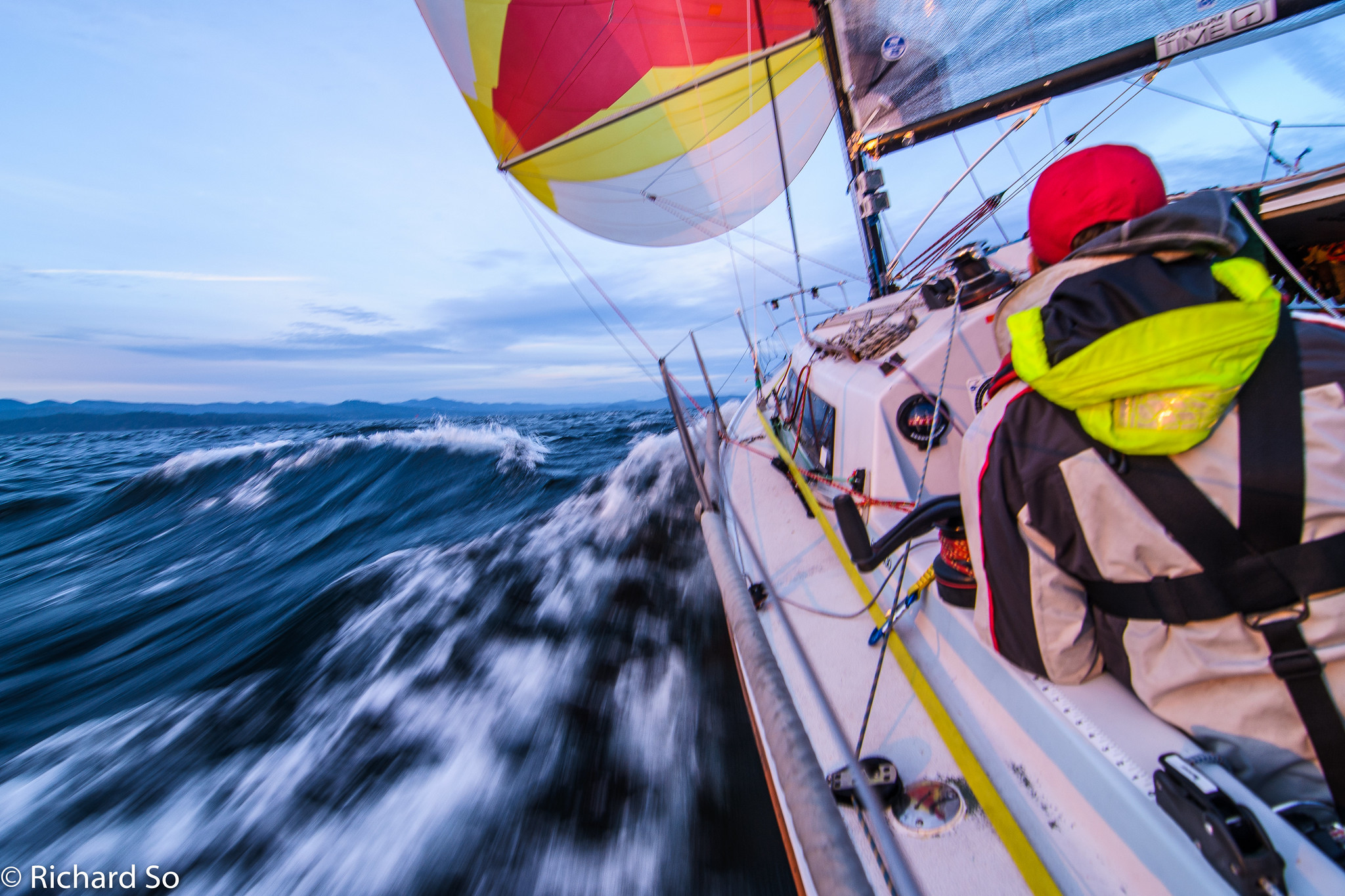
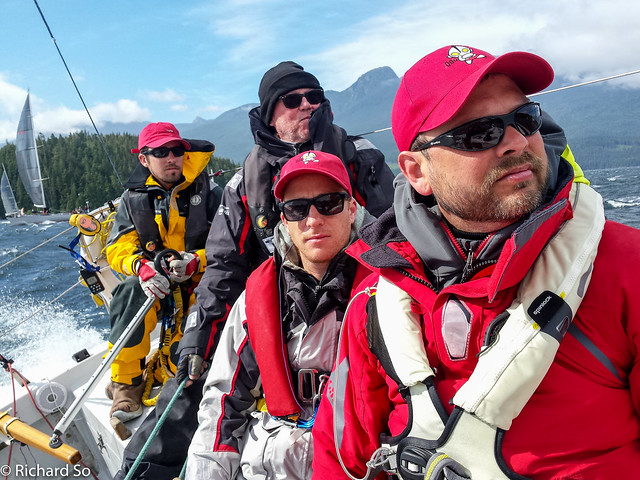
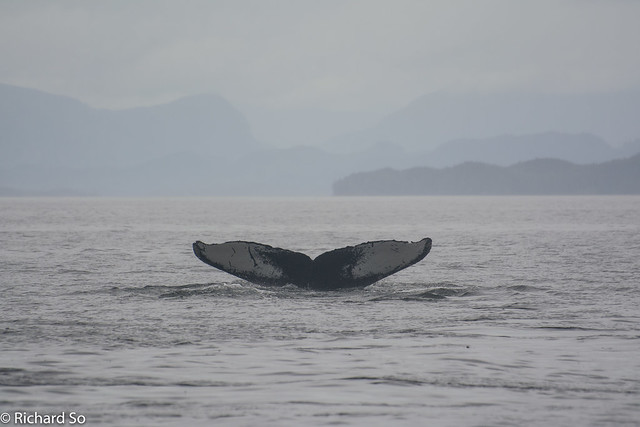
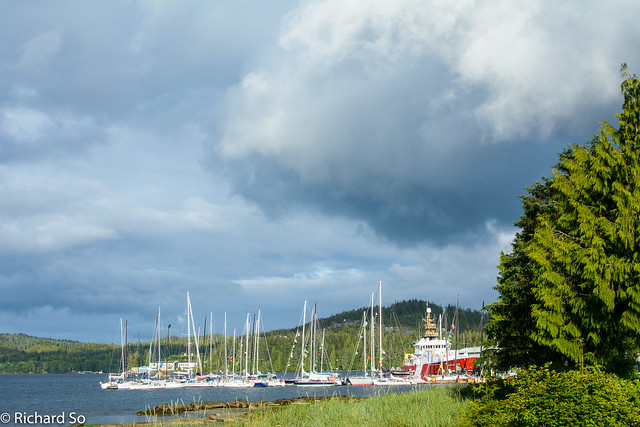
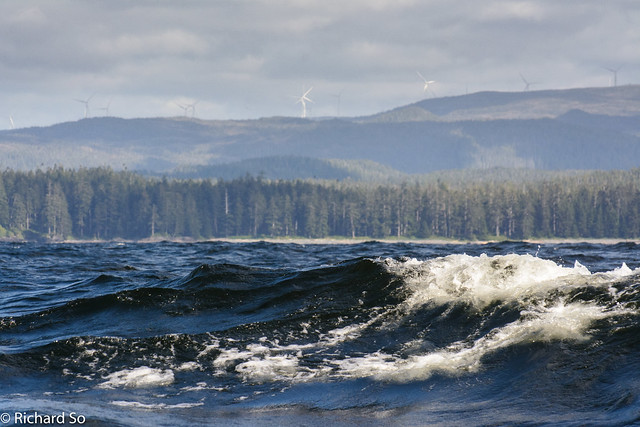
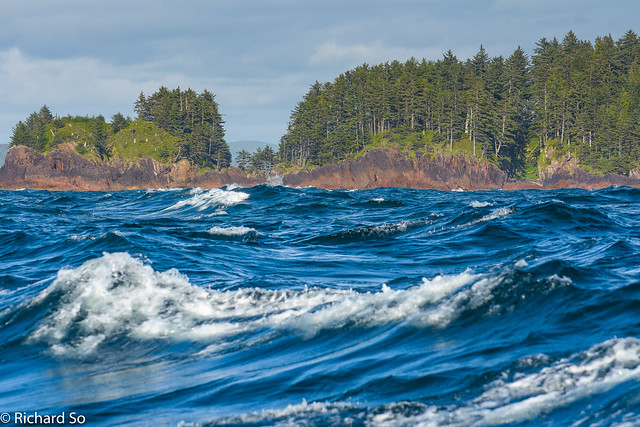
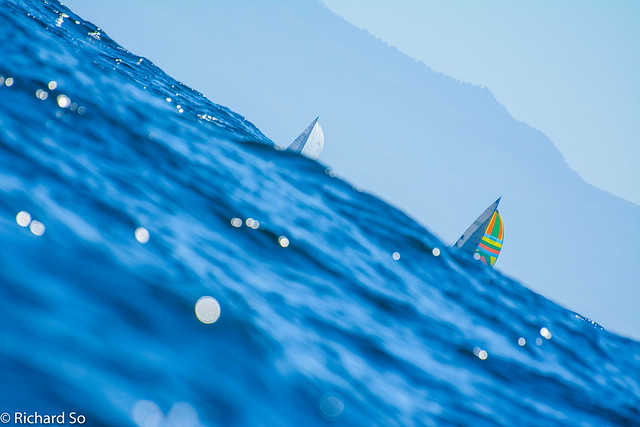
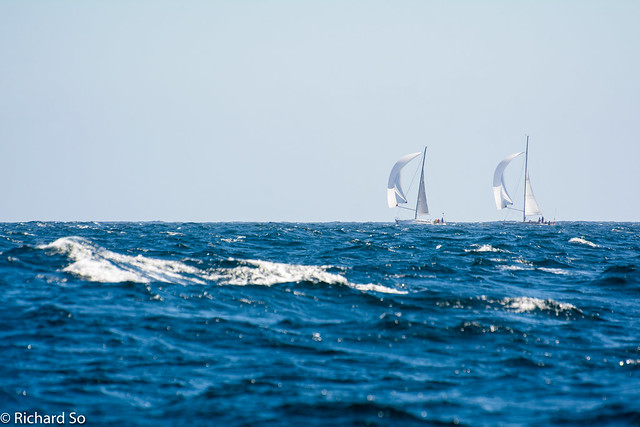
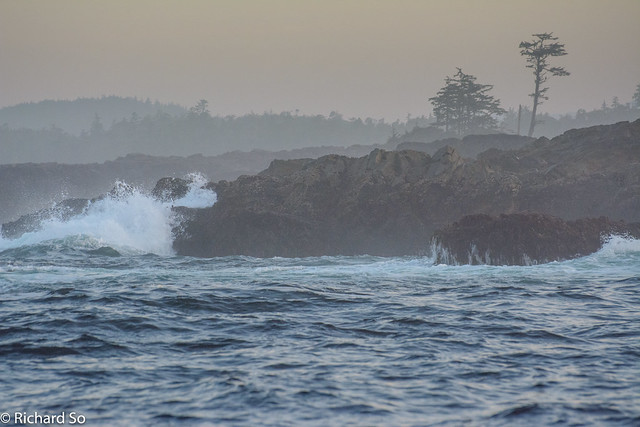
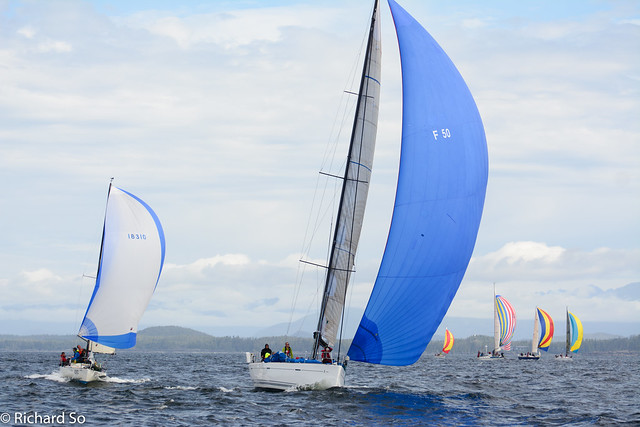
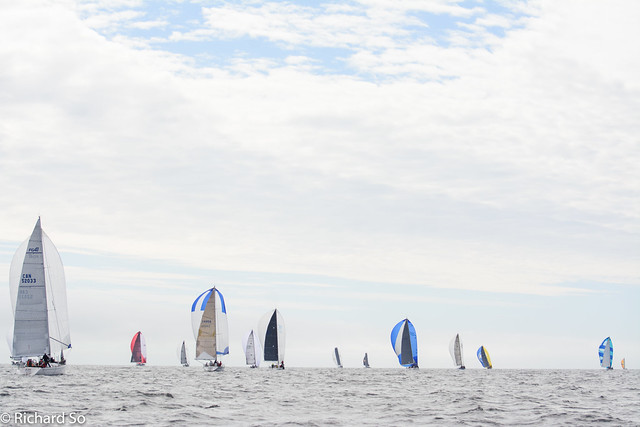
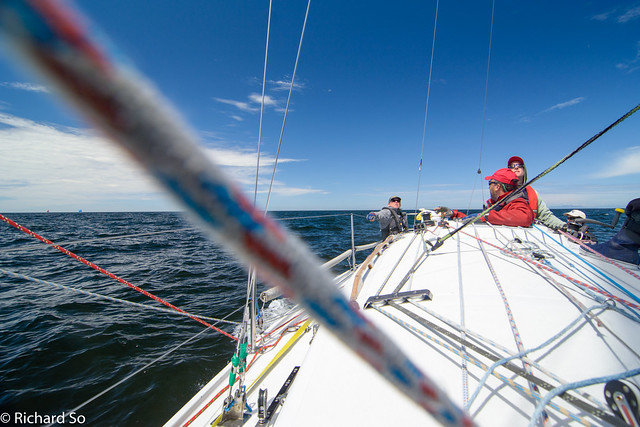

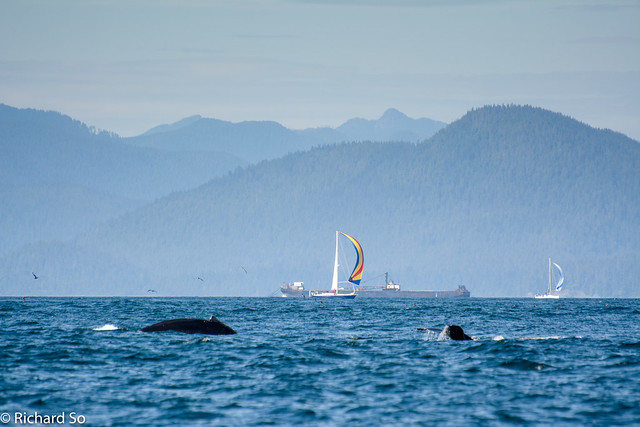

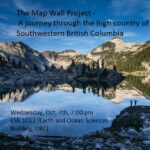
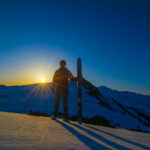
Lovely photos Richard! One day maybe I will do this race!
Thanks Evan! Hope you get the chance to race it!
Thanks for the great blog post! Informative captions for planning next year, and beautiful photography!